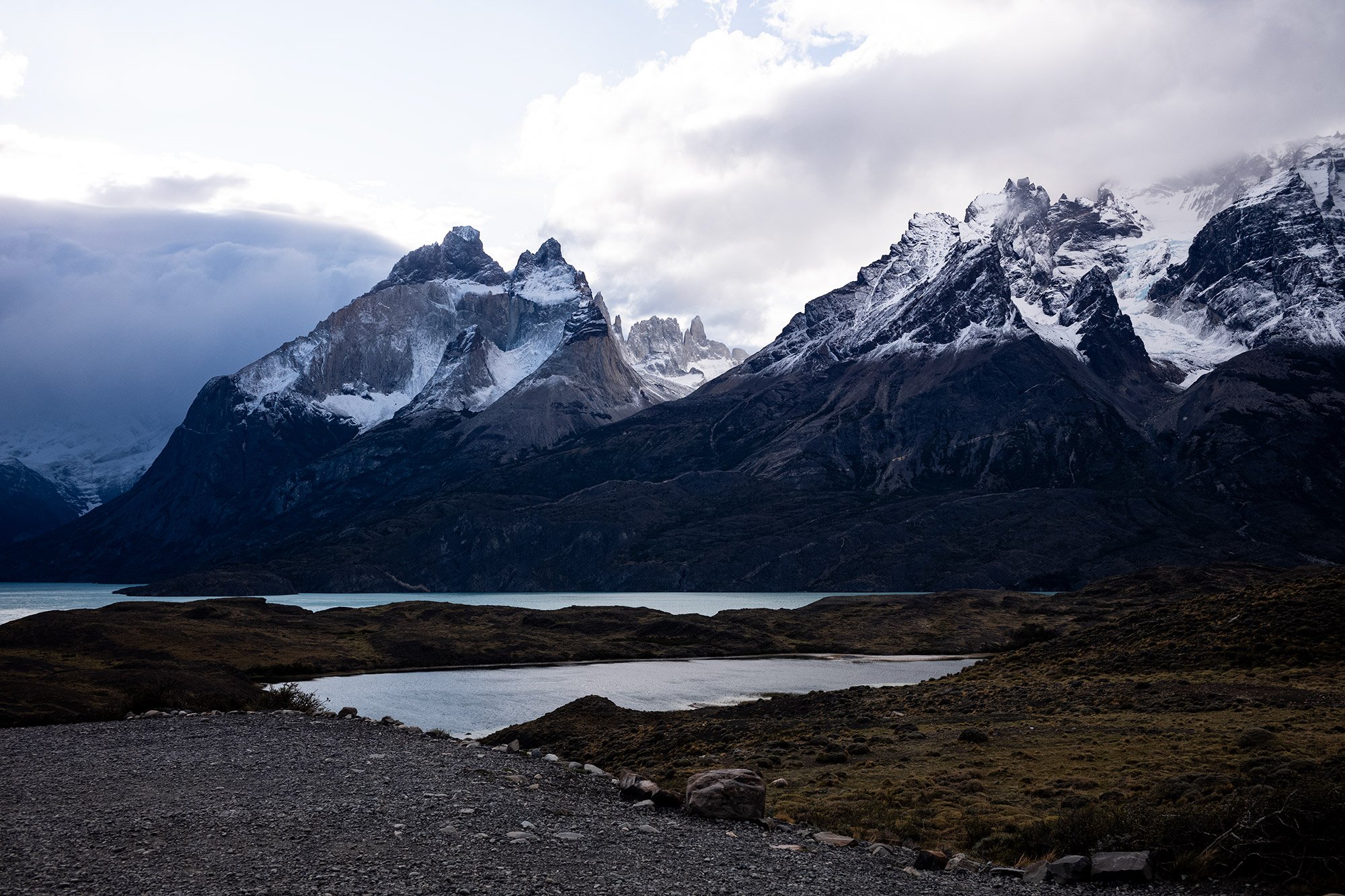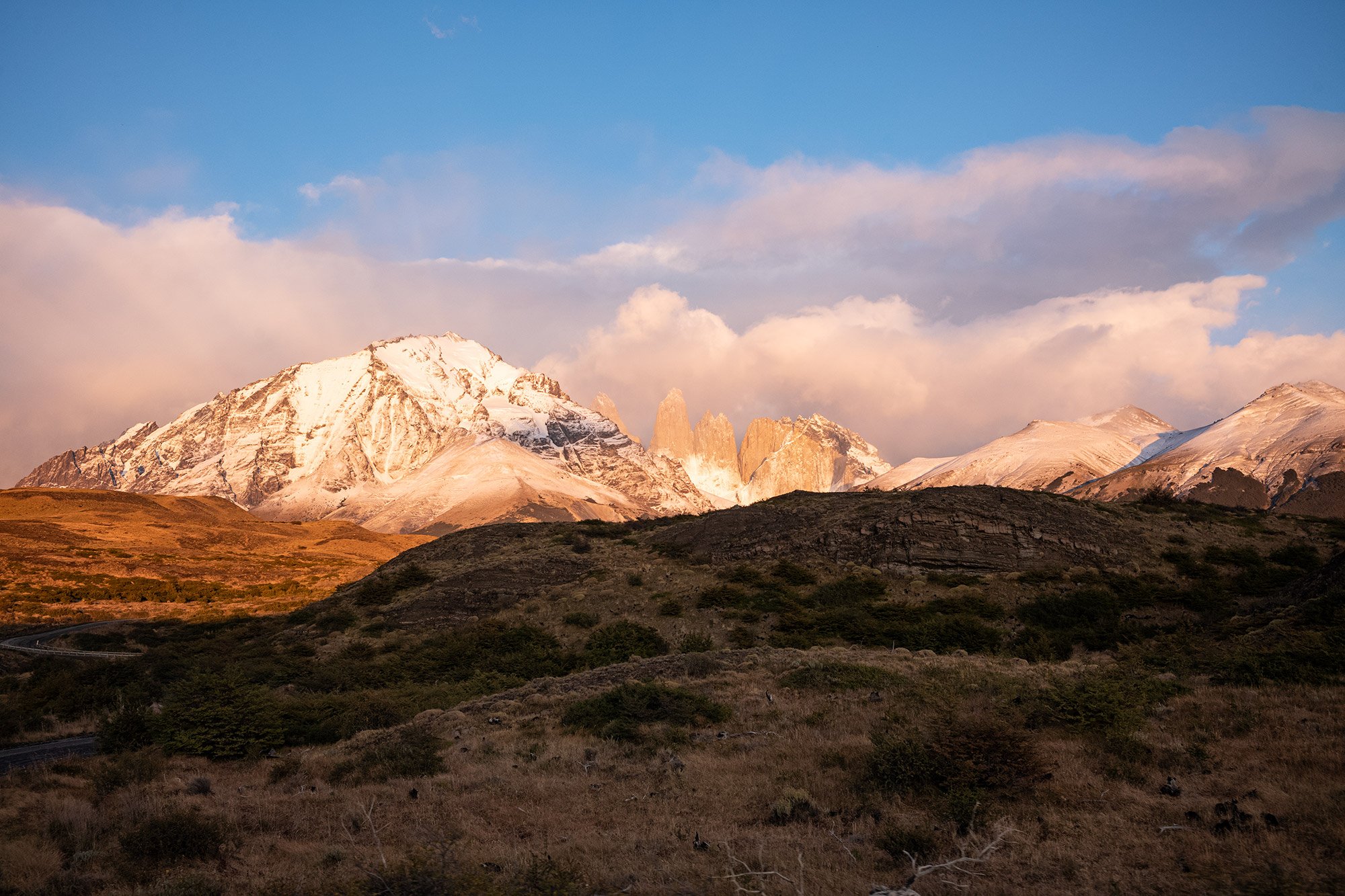
Patagonia II: Part III
The hike to the base of the towers.
It’s still dark when my alarm goes off. I fight the urge to turn over and go back to sleep. Instead I turn on the lights and climb into my hiking gear.
My cousin and niece are already in the lobby when I make my appearance. They’ve collected our boxed breakfasts and lunches and are considering what to bring on our hike. When they see me, they collect all the bags and we head to the Jeep. We’ll sort it out when we arrive at the parking lot.
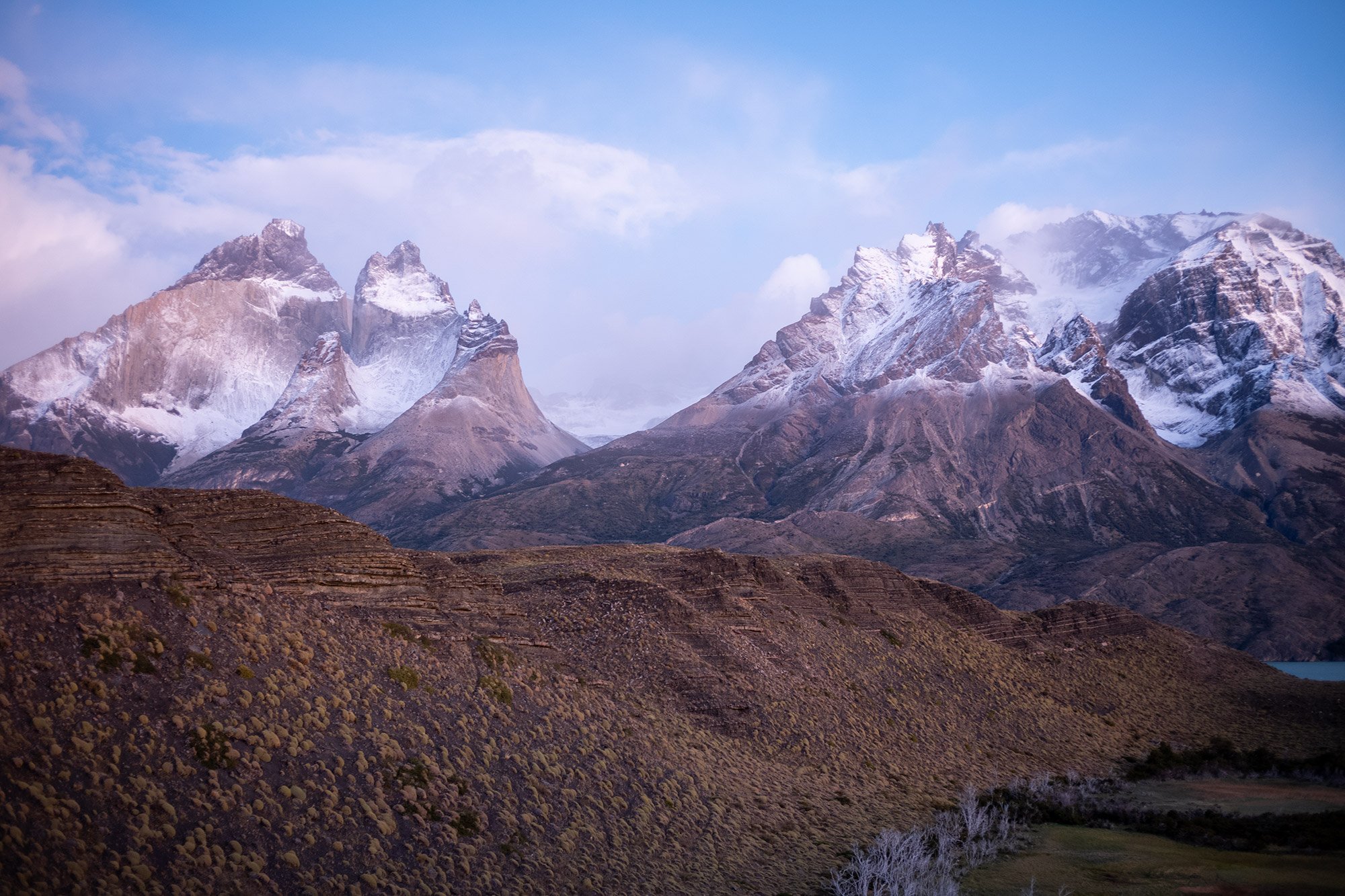
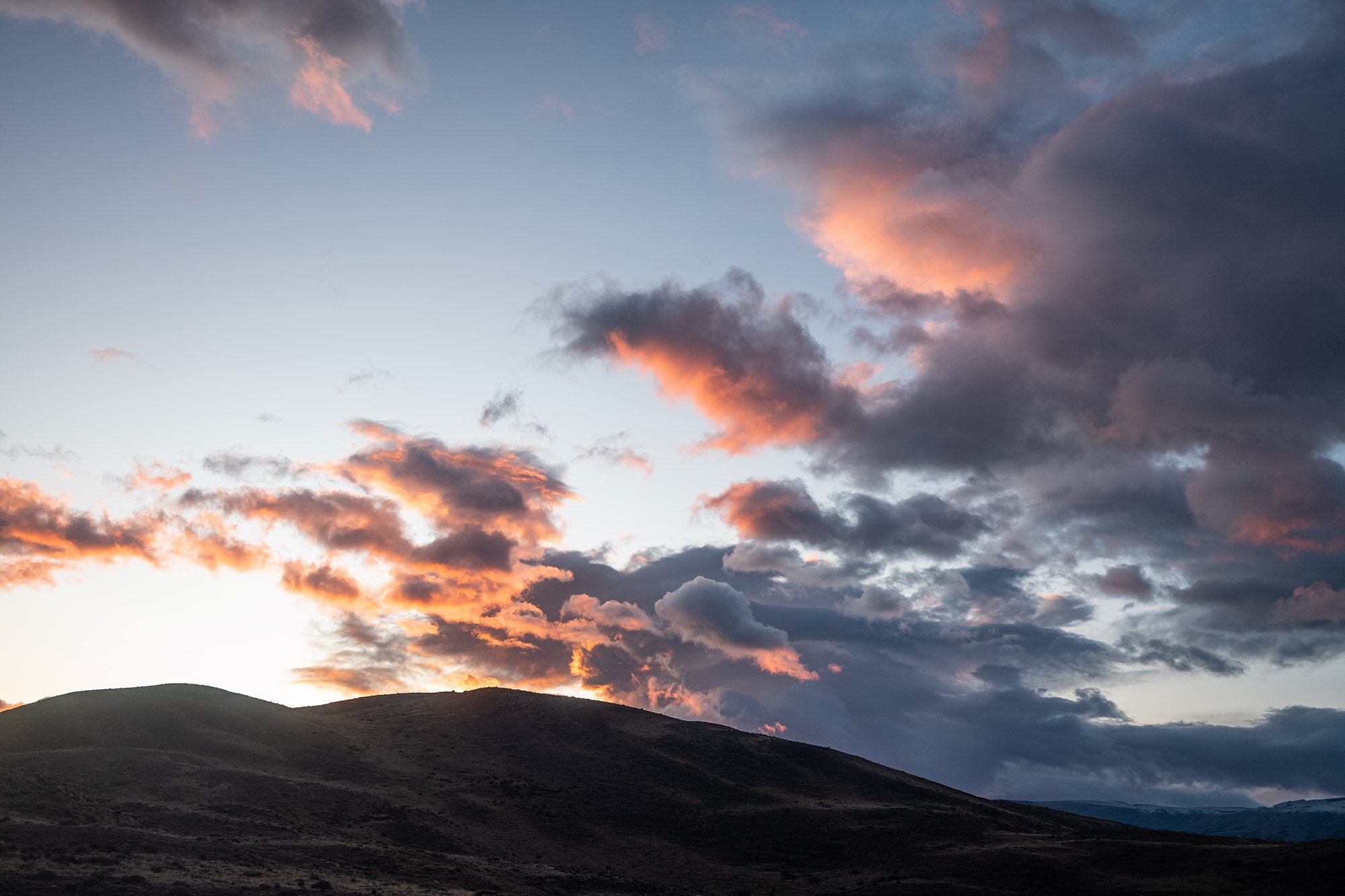

Dawn breaks as we drive to the trailhead. The skies are stunning. The sun lights up the mountains around us. As we pass the Cuernos del Paine, we’re offered a spectacular view. I’m tempted to ask my cousin to stop the car for photos, but we’re all eager to reach the trailhead and get started.
As we get closer to the towers, the clouds drift away and the sun paints the granite peaks rose. It’s a tease; we won’t see such spectacular views for the rest of the day, but I am thankful to have been granted these.
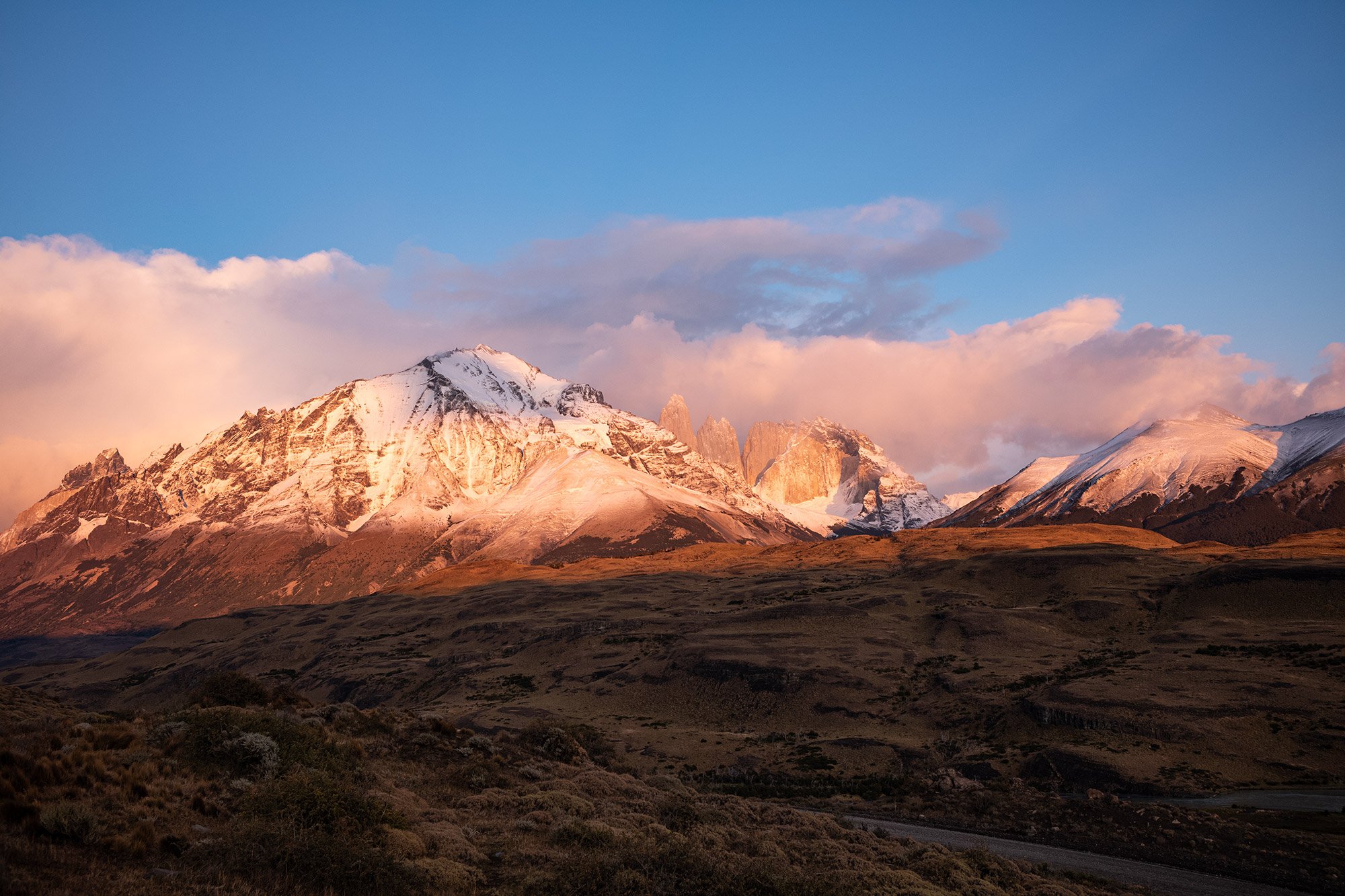
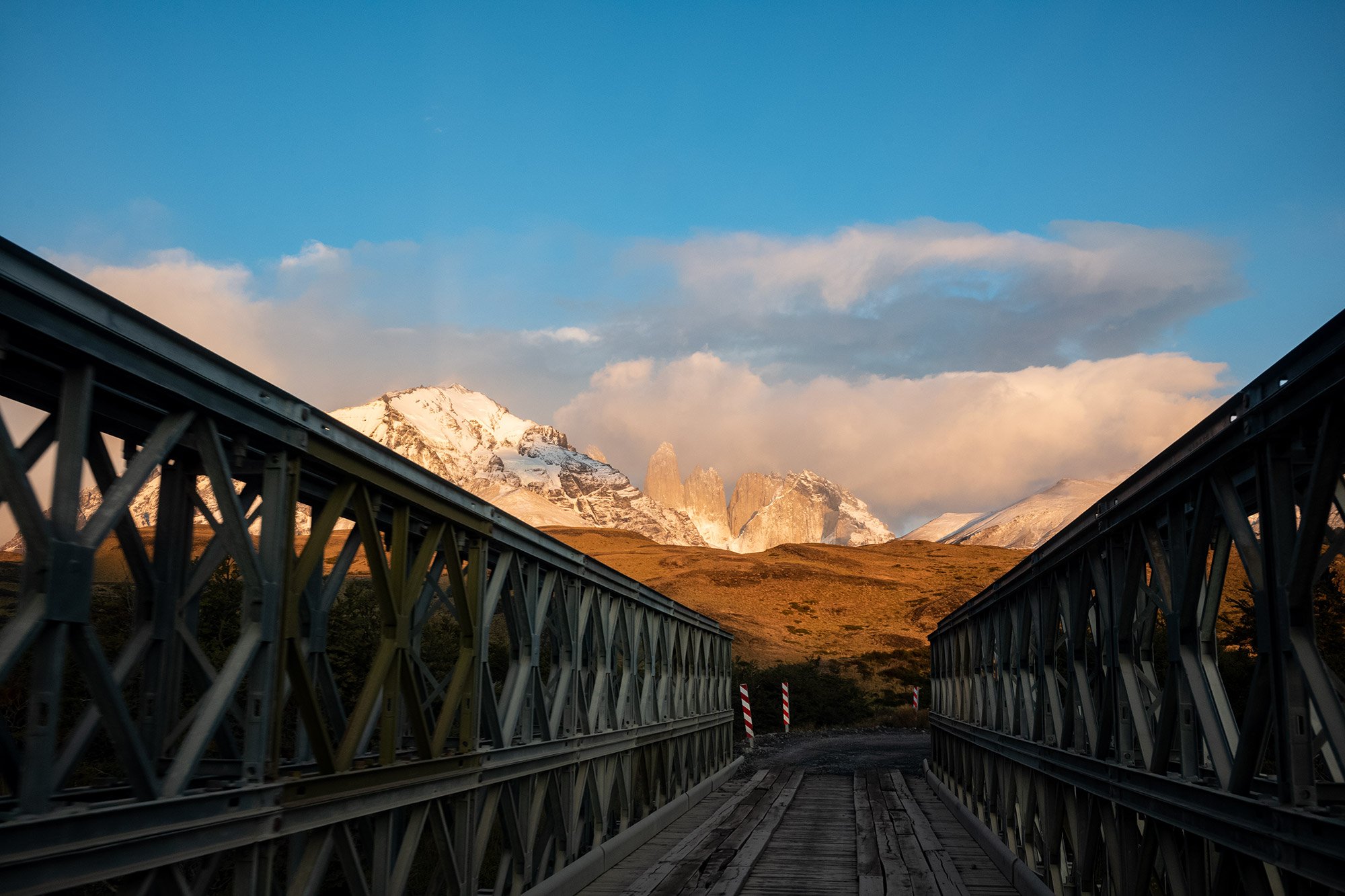

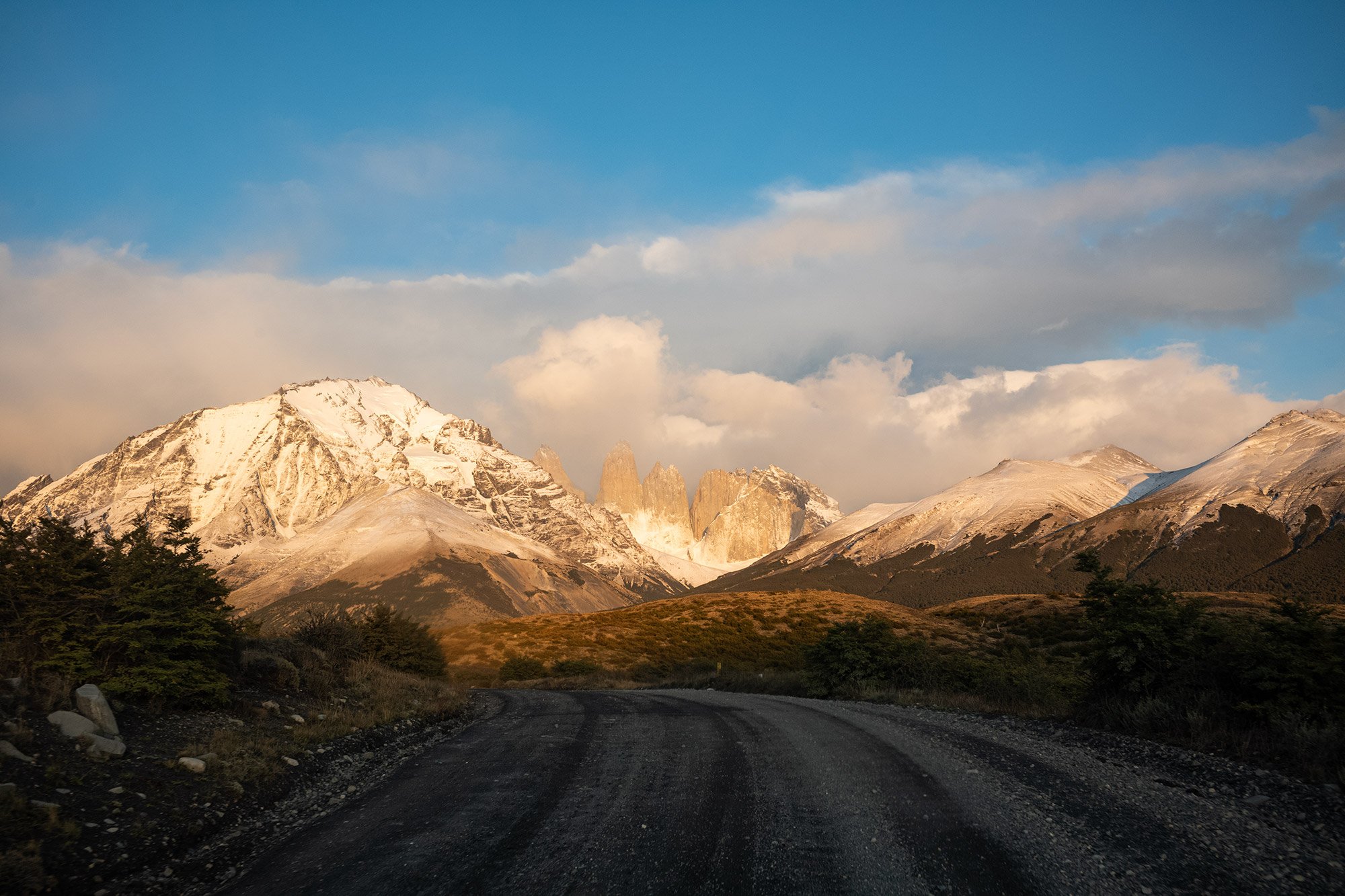
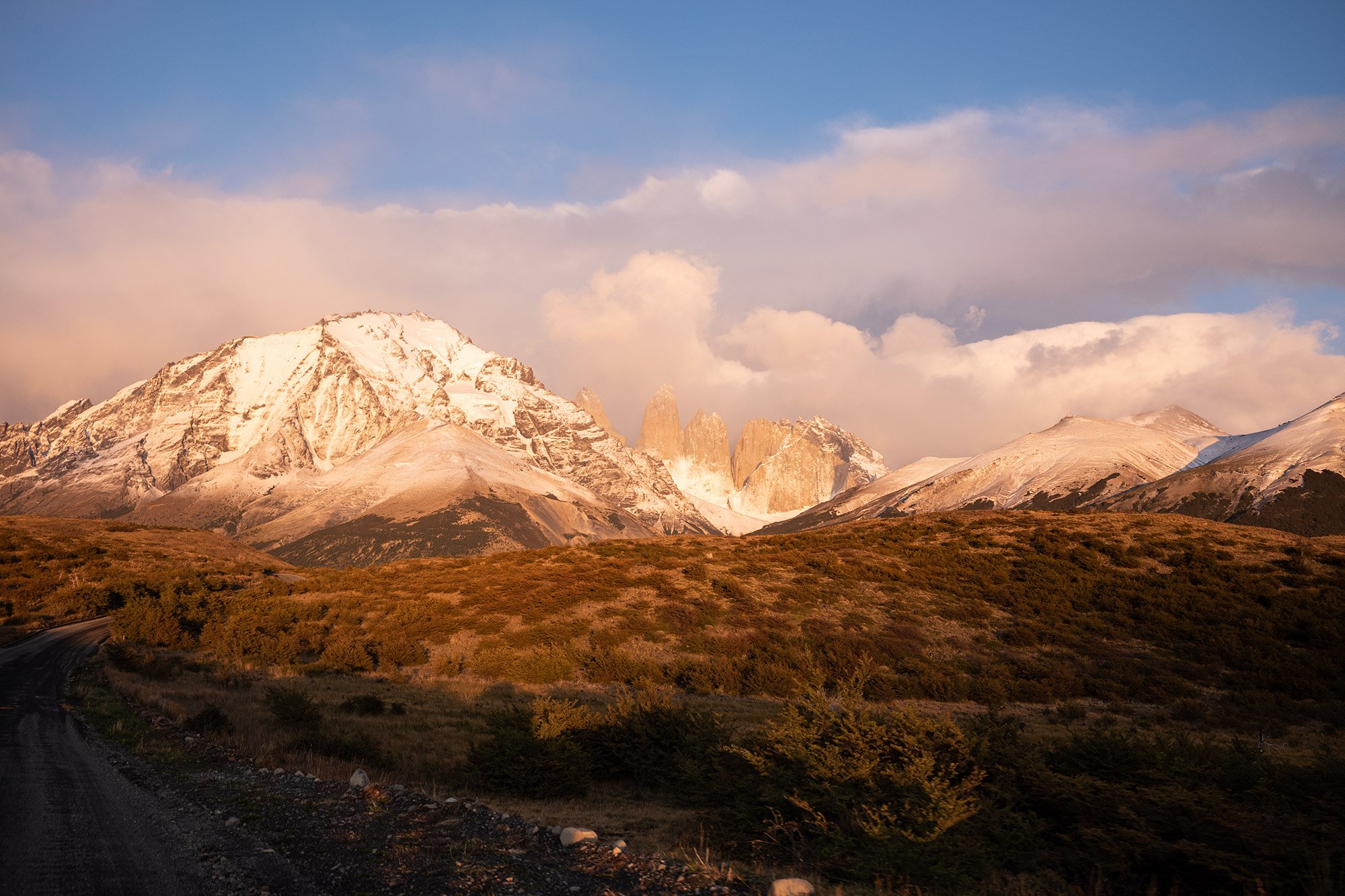
We breakfast in the parking lot, preparing ourselves mentally for the hike ahead. It’s a 20-22 kilometer hike with 840 meters of elevation gain and the most popular hike in the park. Rodrigo had suggested we start early to avoid the buses that disgorge large groups of hikers that are either starting the W or here for the day (like us). He said it’s no fun getting stuck on the trail behind a long line of hikers. We agree.
The hike begins easily. We cross a bridge and begin a gentle ascent. There’s a large group in front of us and a few couples who are keeping pace. As we climb we leapfrog each other as one group or another will pause for others to catch up or as we pause to adjust our poles and shoelaces and drink water.
At some point the rain stops and the sun breaks through the clouds. It feels like a fortuitous sign and we stop to shed some layers from the many we had donned at the outset.
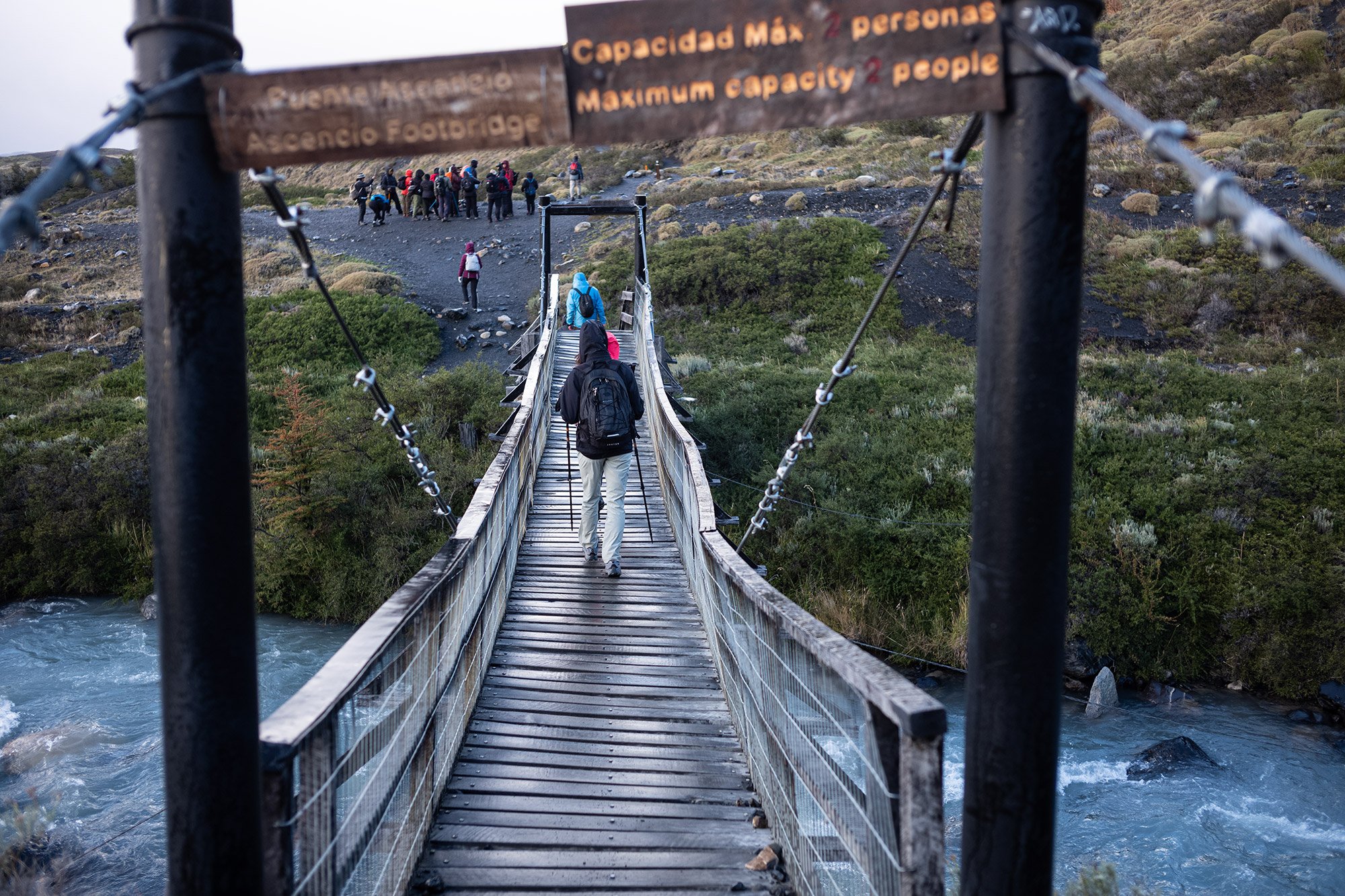
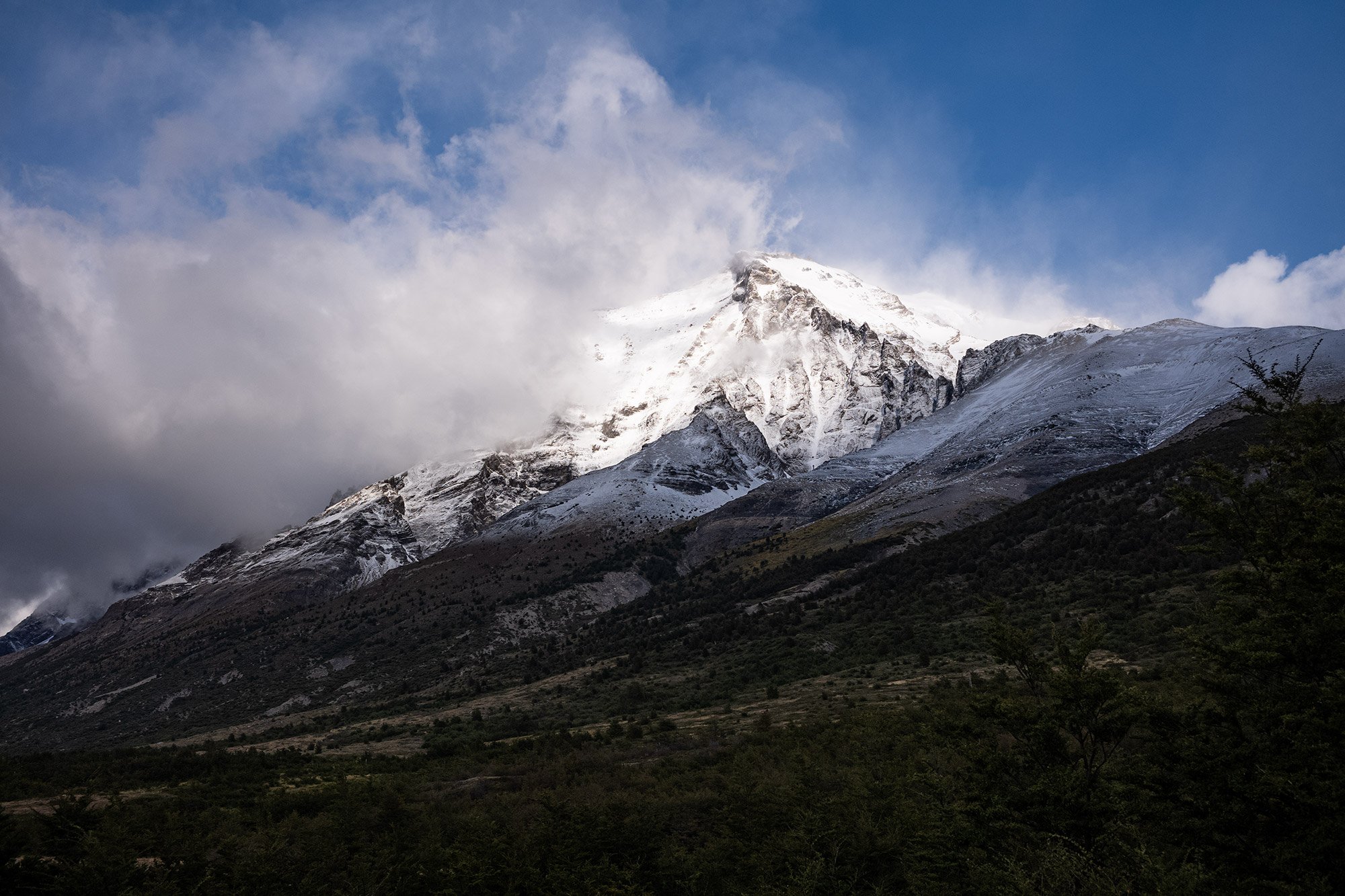
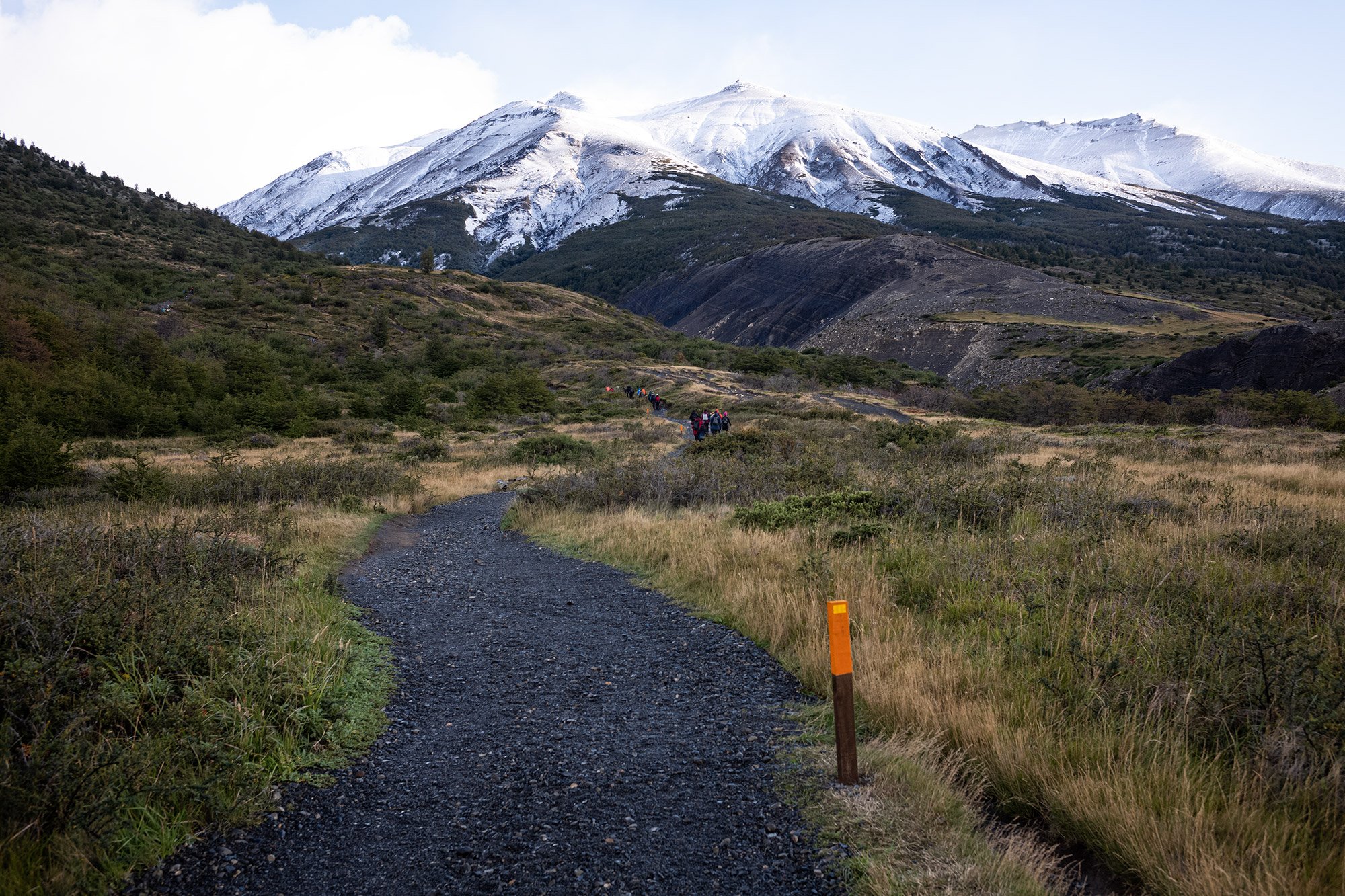
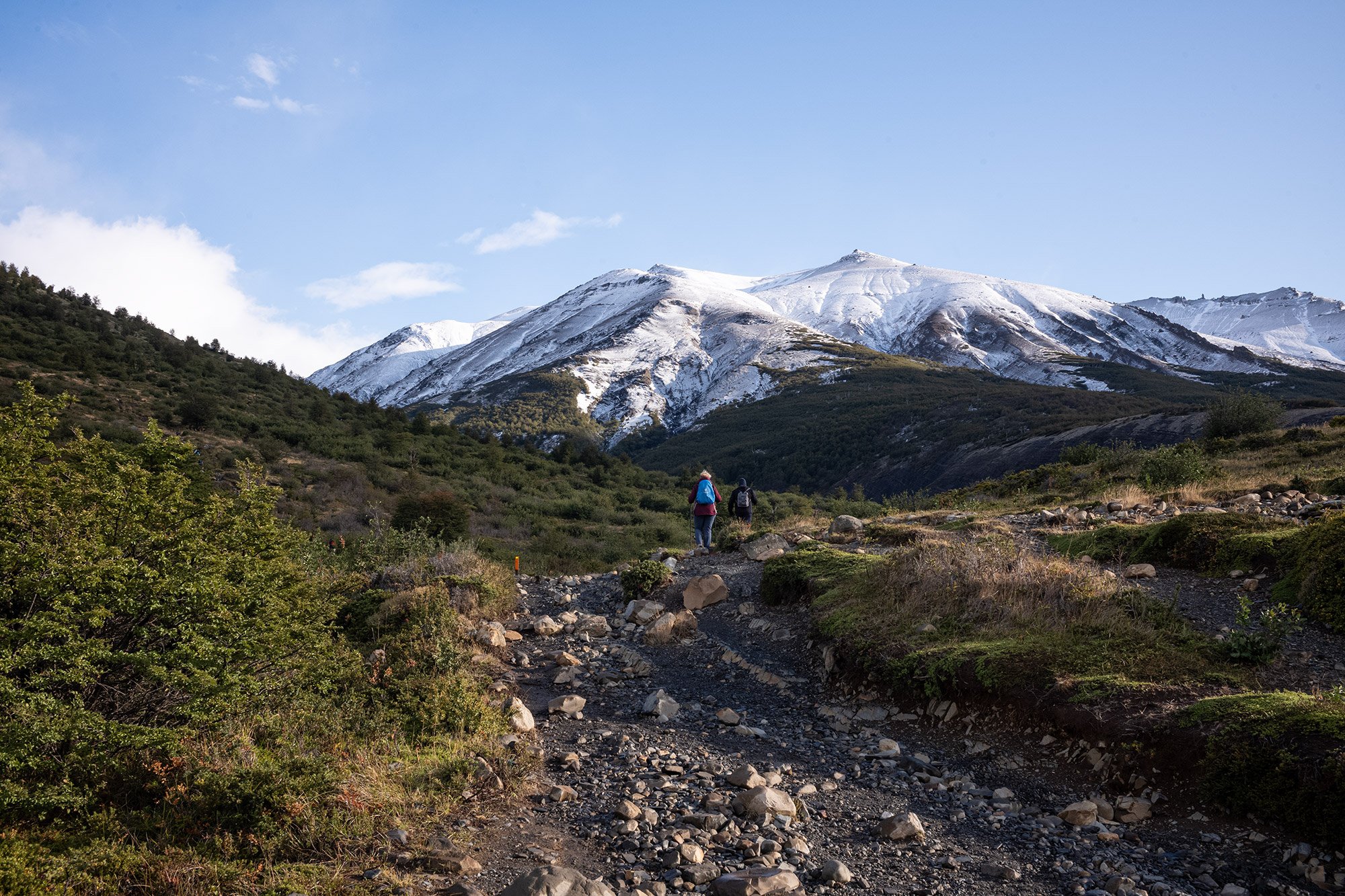
Near the top of our ascent we turn and look back at the elevation we’ve gained and the landscape we’ve left behind. A river winds its way through the pampas to a lake; snow-capped mountains rise behind.
Ahead, we see the trail snake ahead along the valley, a river winds its way below. In the valley, the weather in the valley is completely different. The blue skies give way to clouds and we can no longer see the peaks ahead.
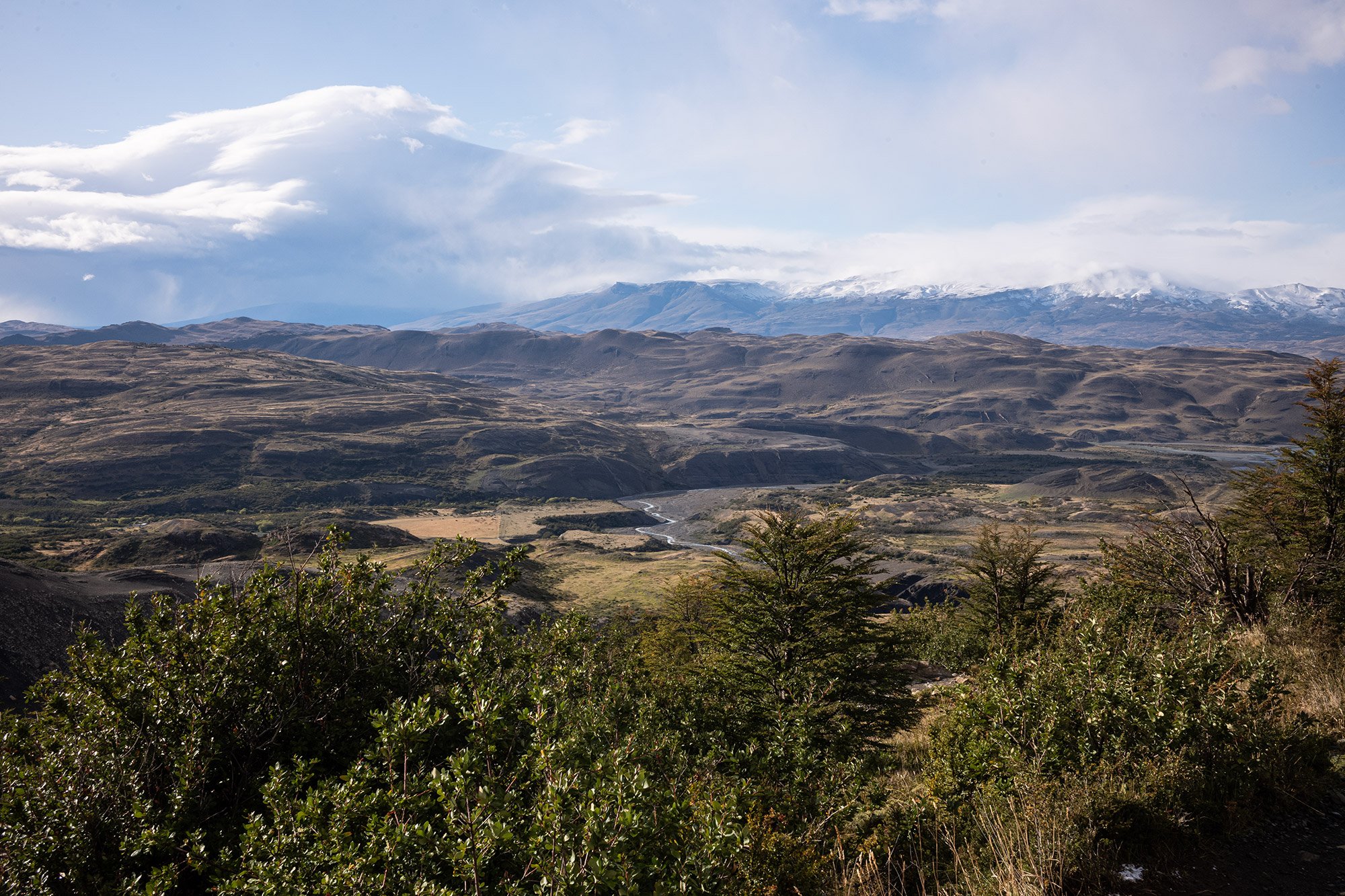
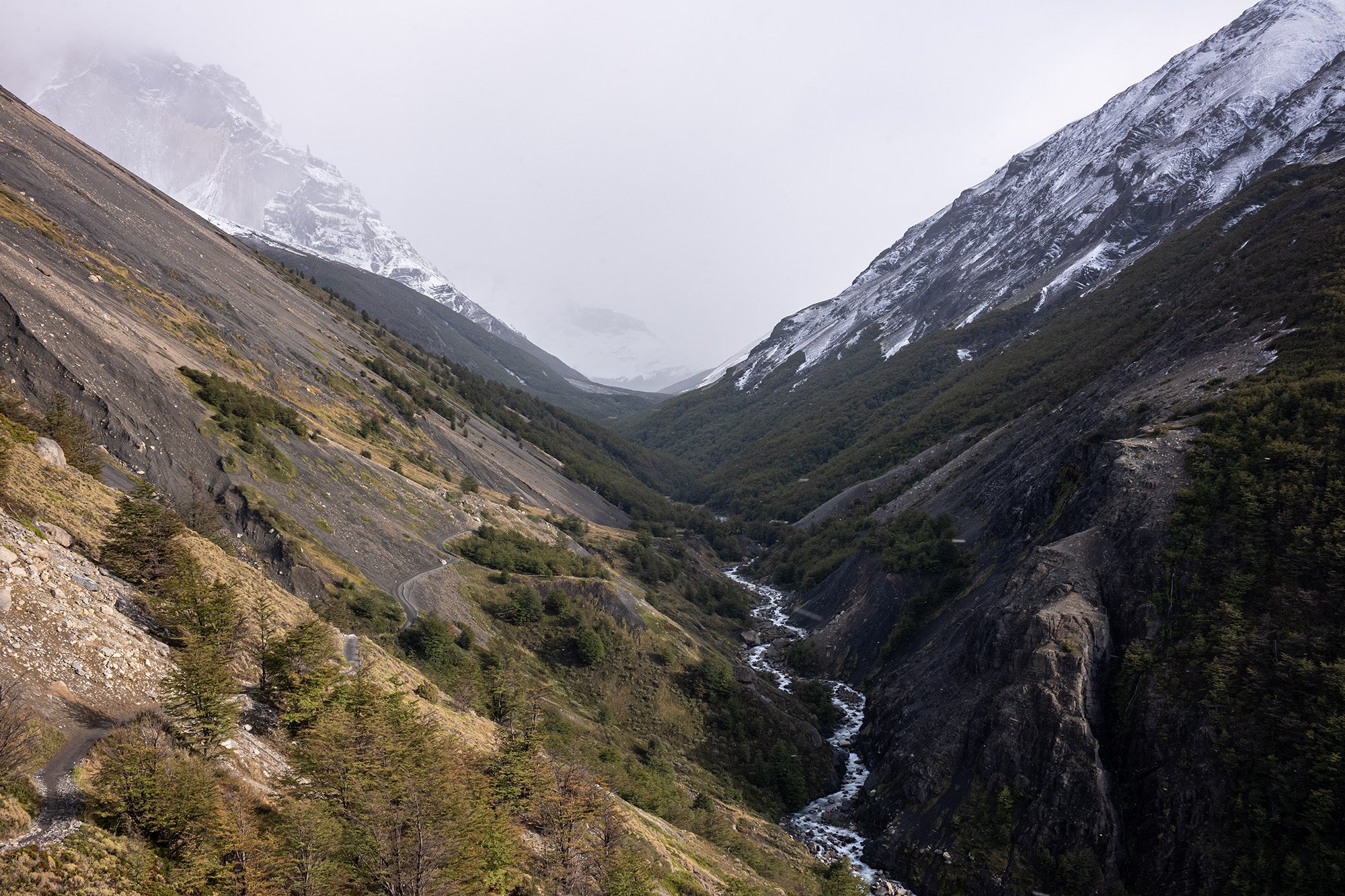
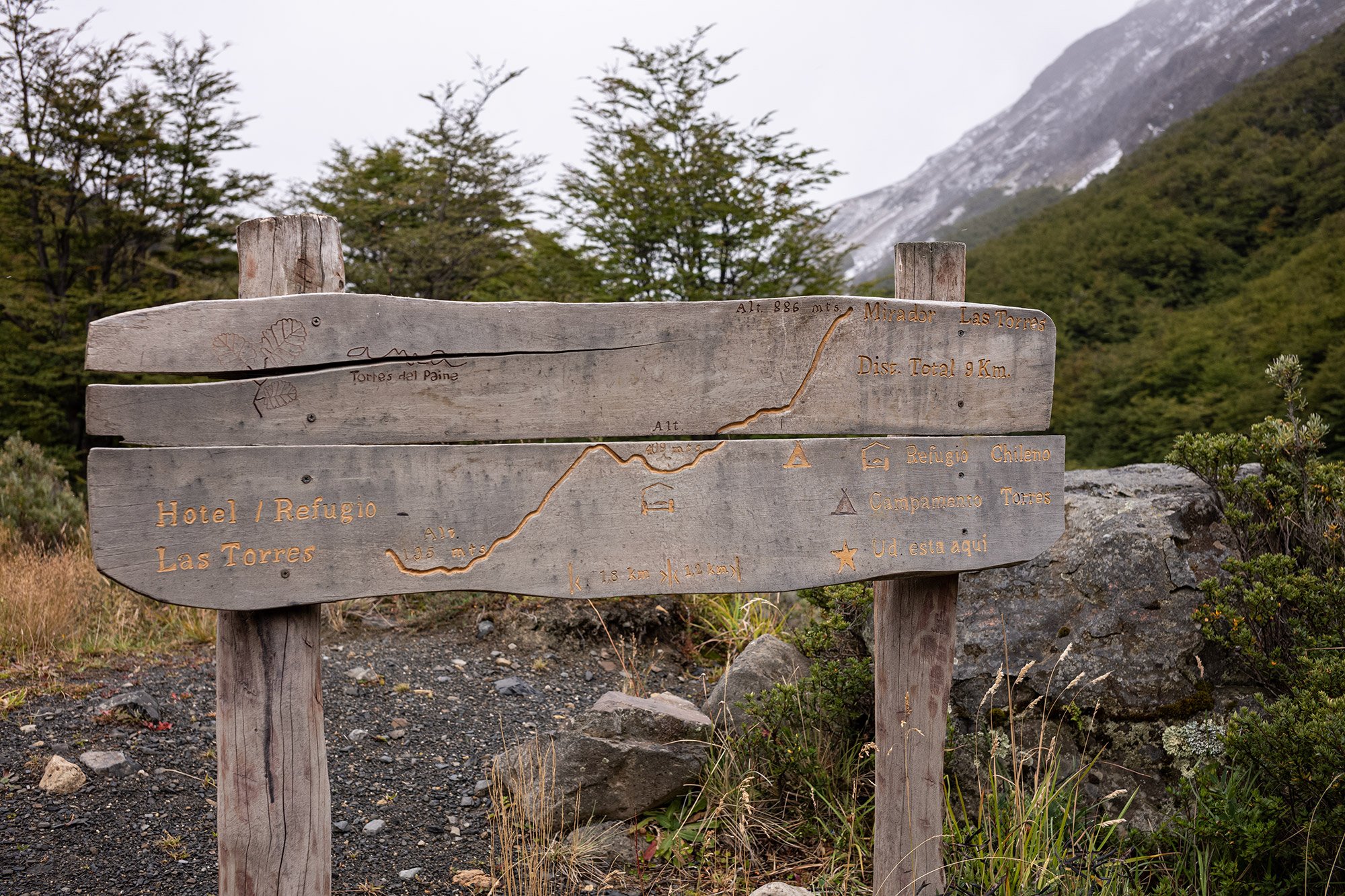
As we near the refugio Chileno that sits almost at the halfway point on our hike we cross the river. At the refugio, picnic tables are full of people eating and drinking. The small restaurant looks packed inside.
Outside, tents set up on platforms climb the hill. We decide not to stop and to push onwards.


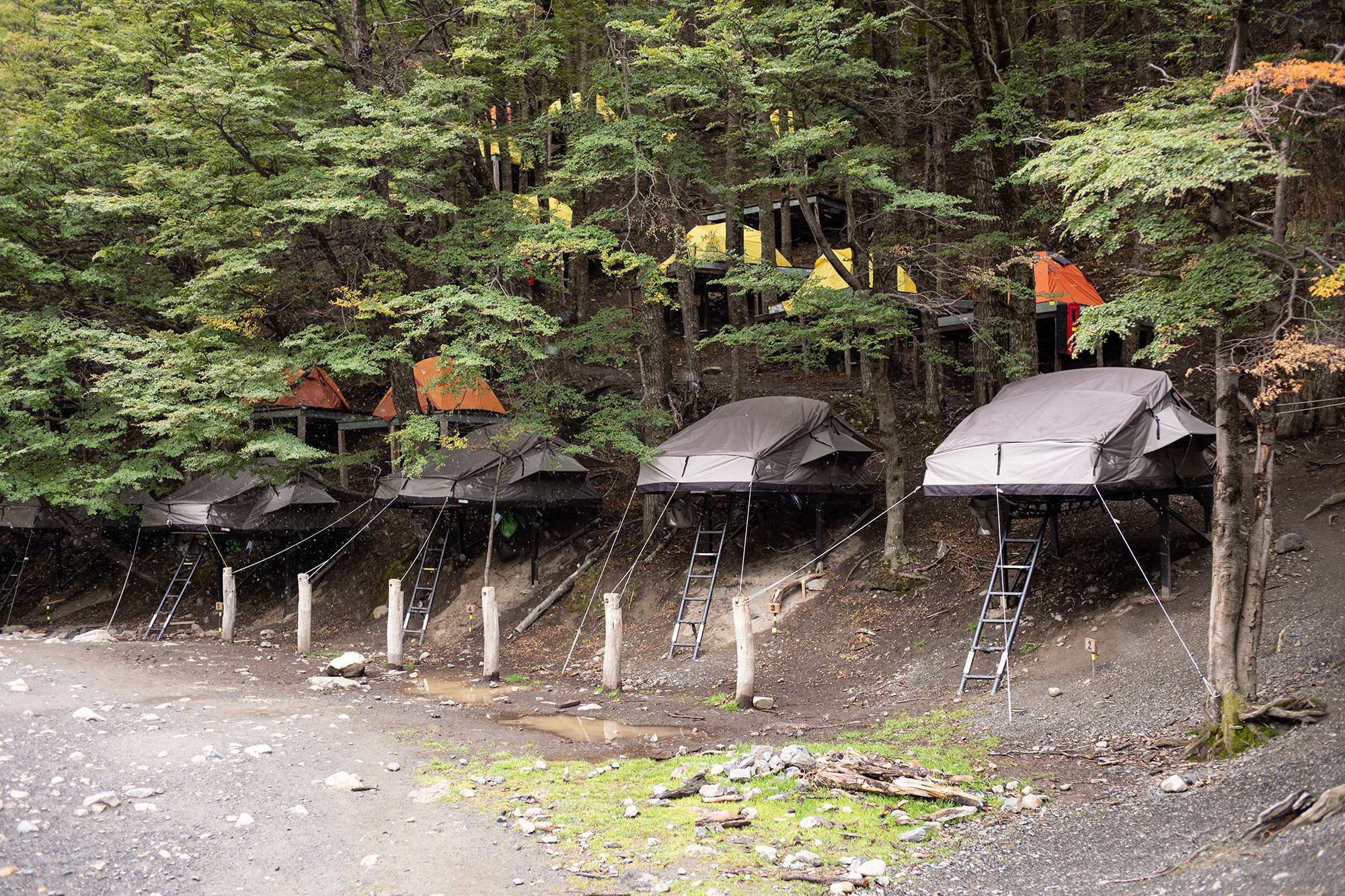

Beyond the refugio we cross the river once again and slowly ascend the slopes of the valley. A light snow begins to fall. We pass small waterfalls along the path and look across the valley to larger waterfalls that fall from the peaks.

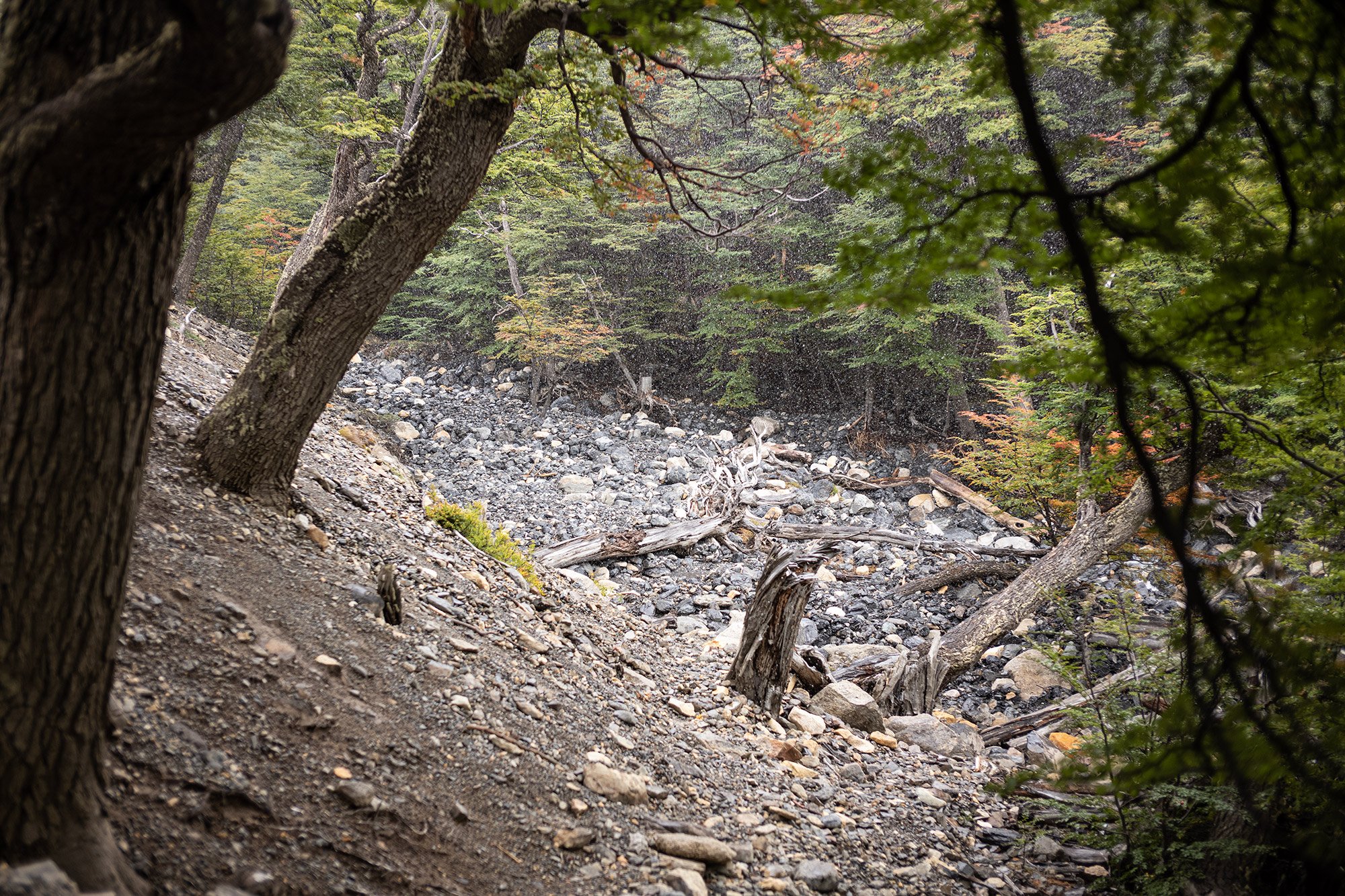
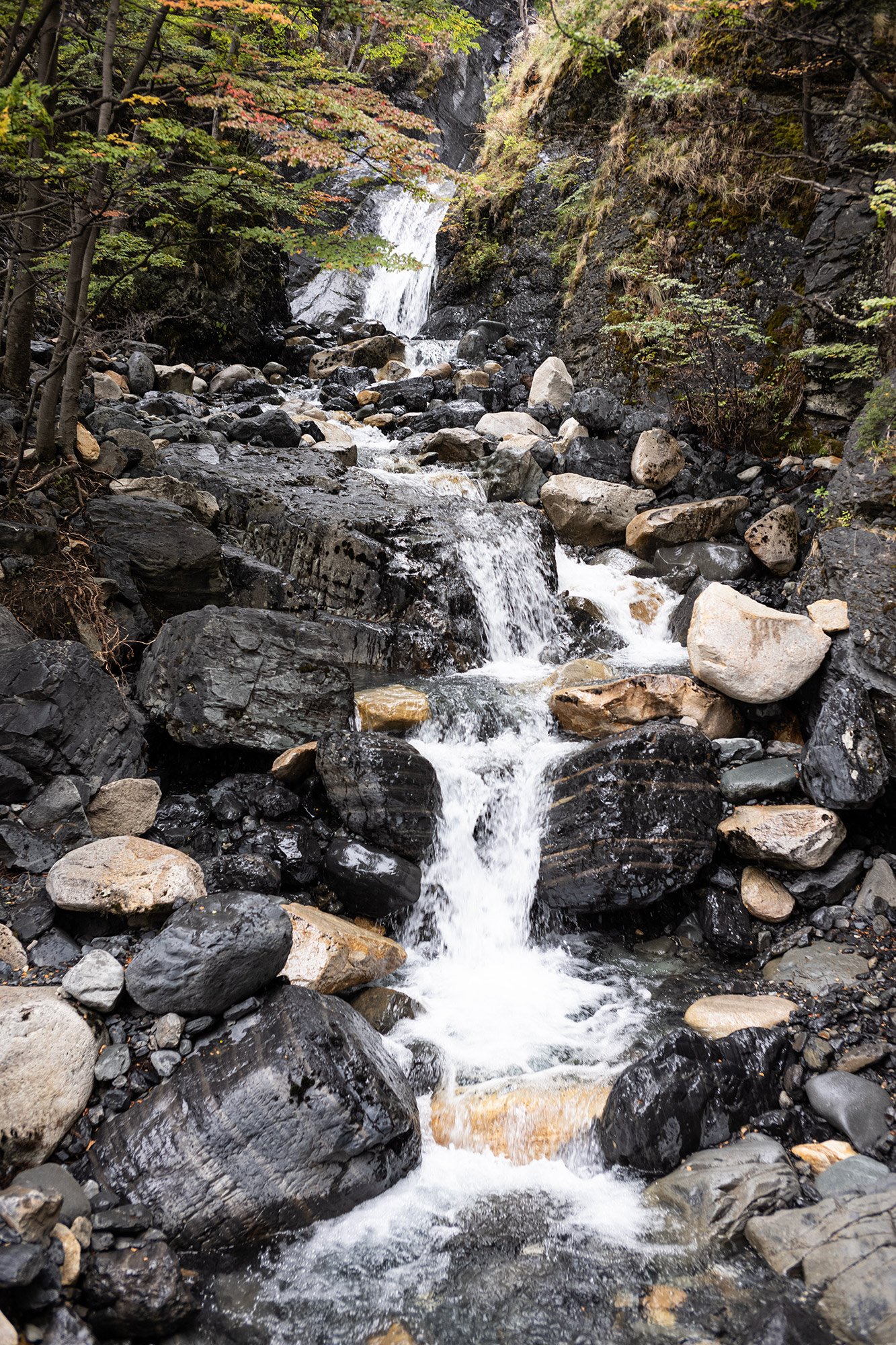


Along the route we see a few people paused on the trail with their guide. There are woodpeckers in the area, and we stop to watch two peck at the soft wood. We barely hear anything when they strike their beaks against the trunks. Behind us another woodpecker is high up in the trees, looking for its own feast.
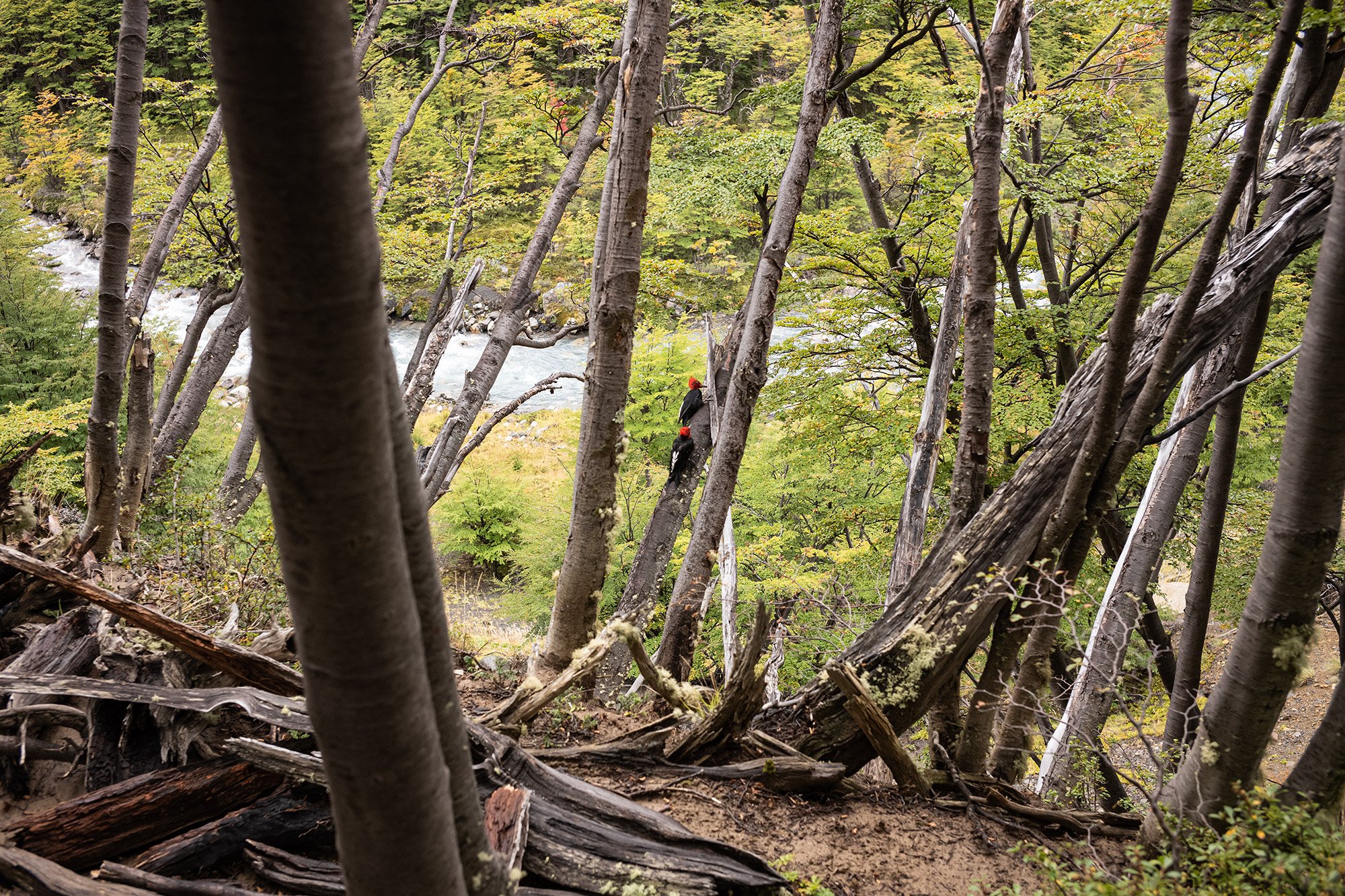
We continue walking. The sun appears to be trying to break through the clouds. We can see its rised above the mountains that mark the valley and we can feel the day brighten. But the clouds and snow persist, the dusting dresses the mountains around us like lace filigree.
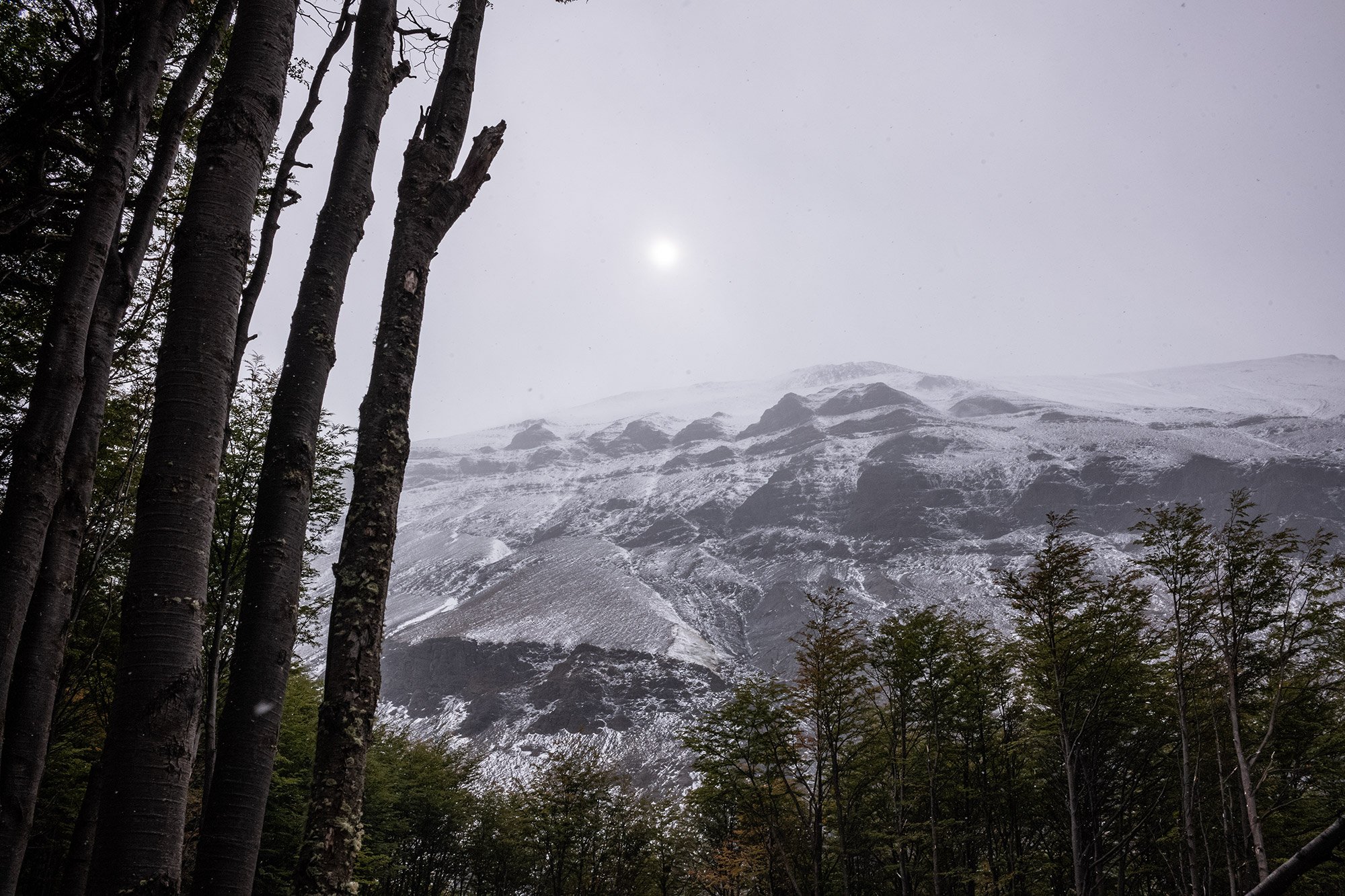
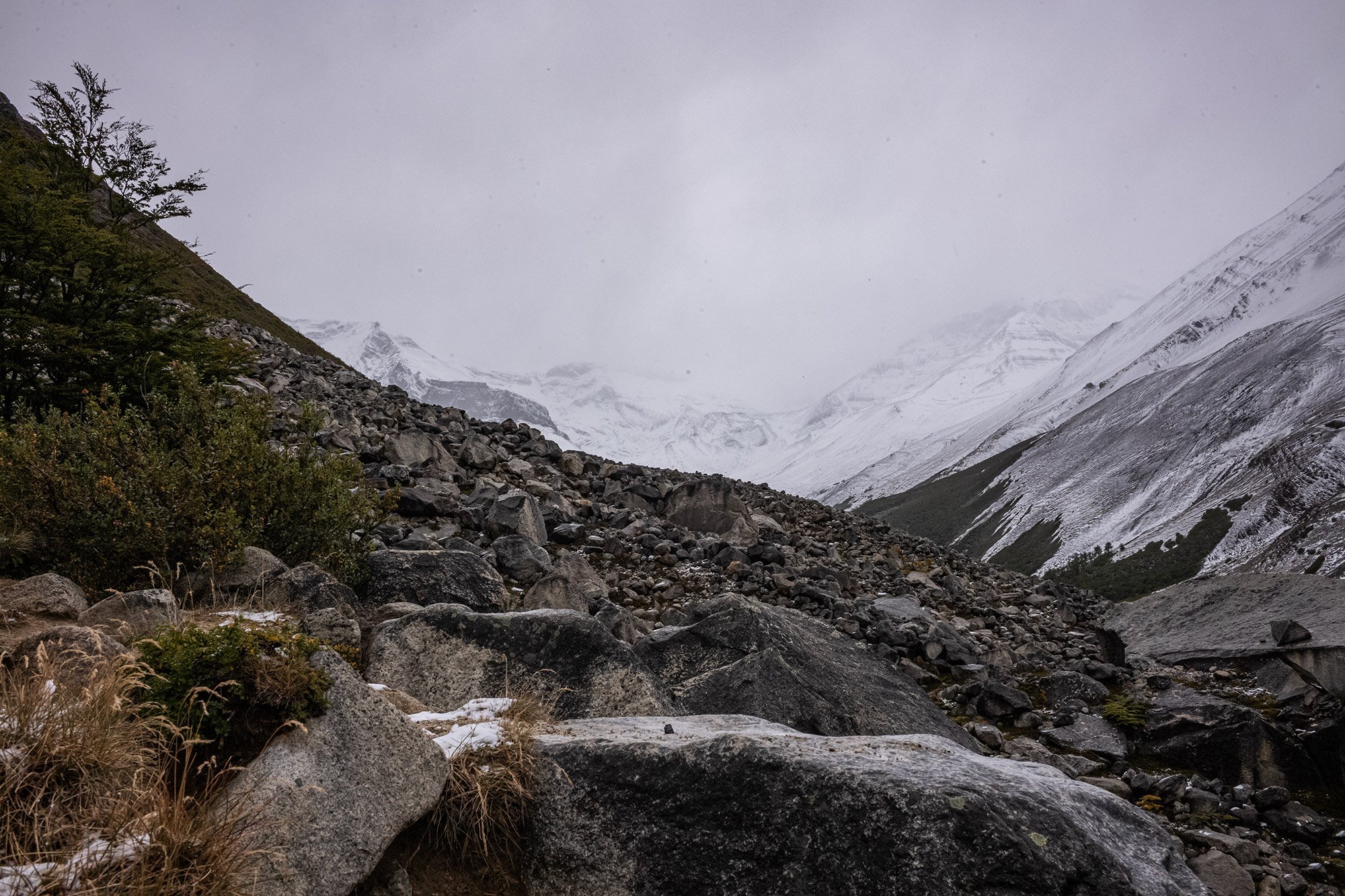
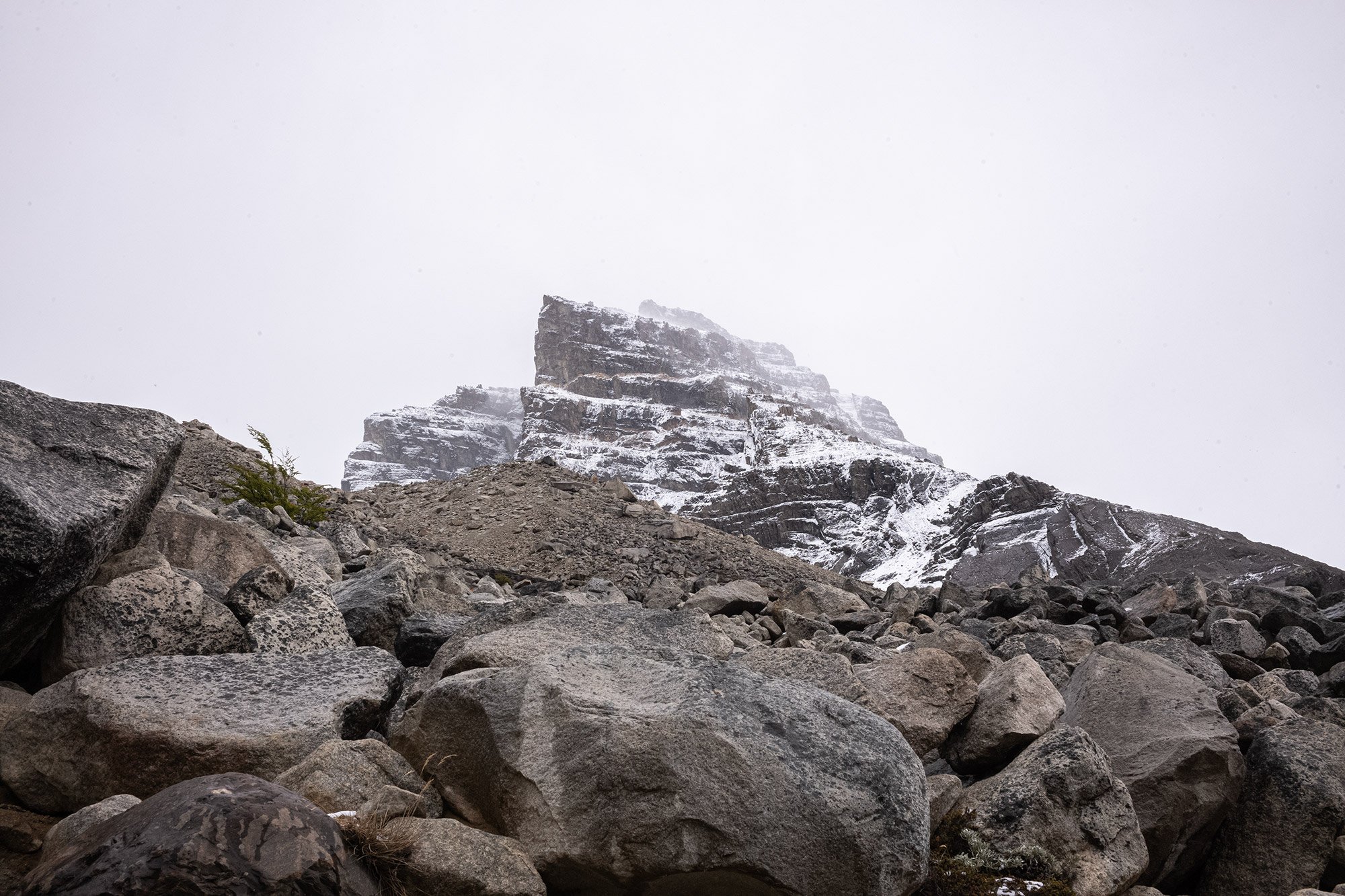
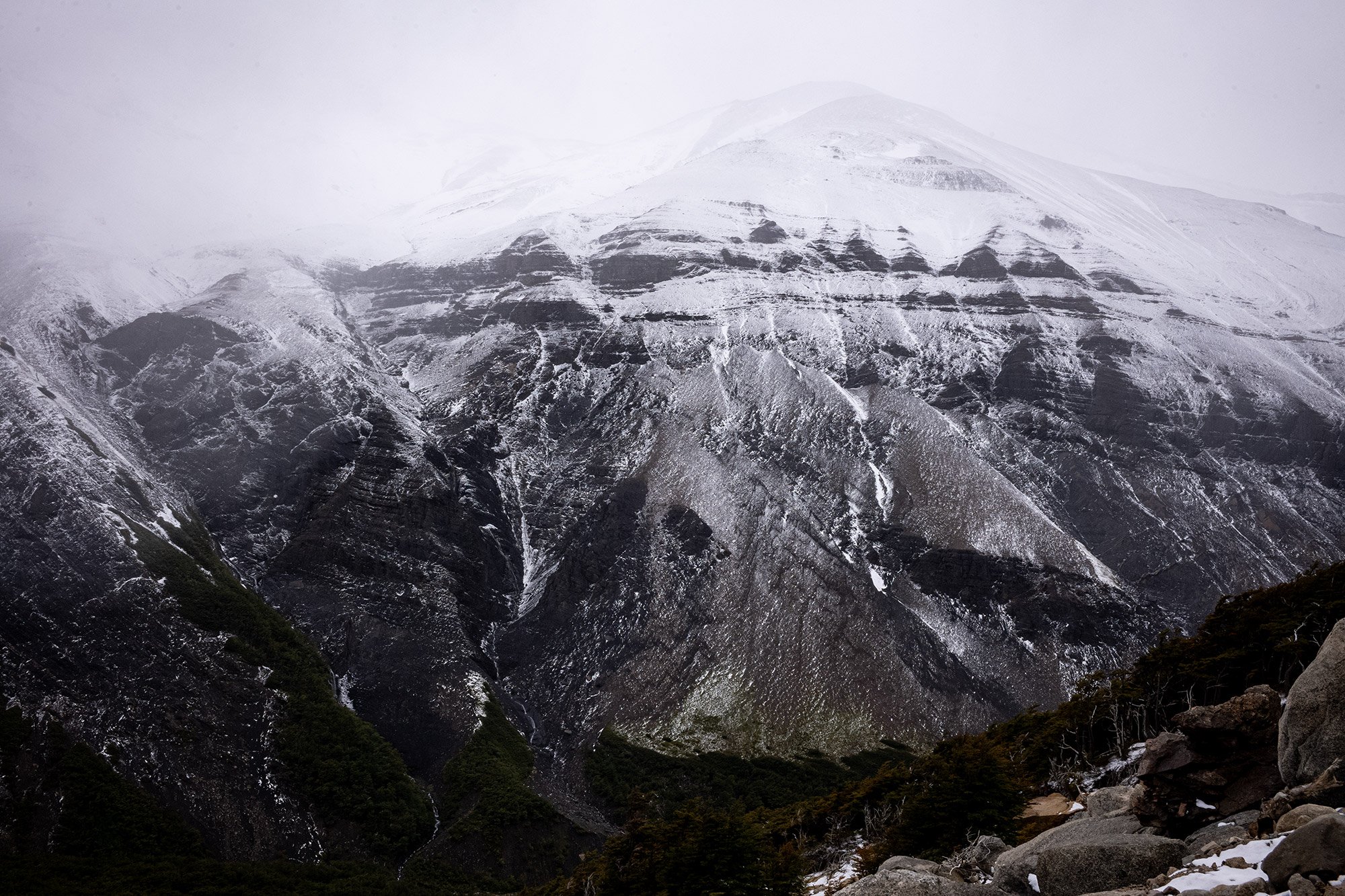
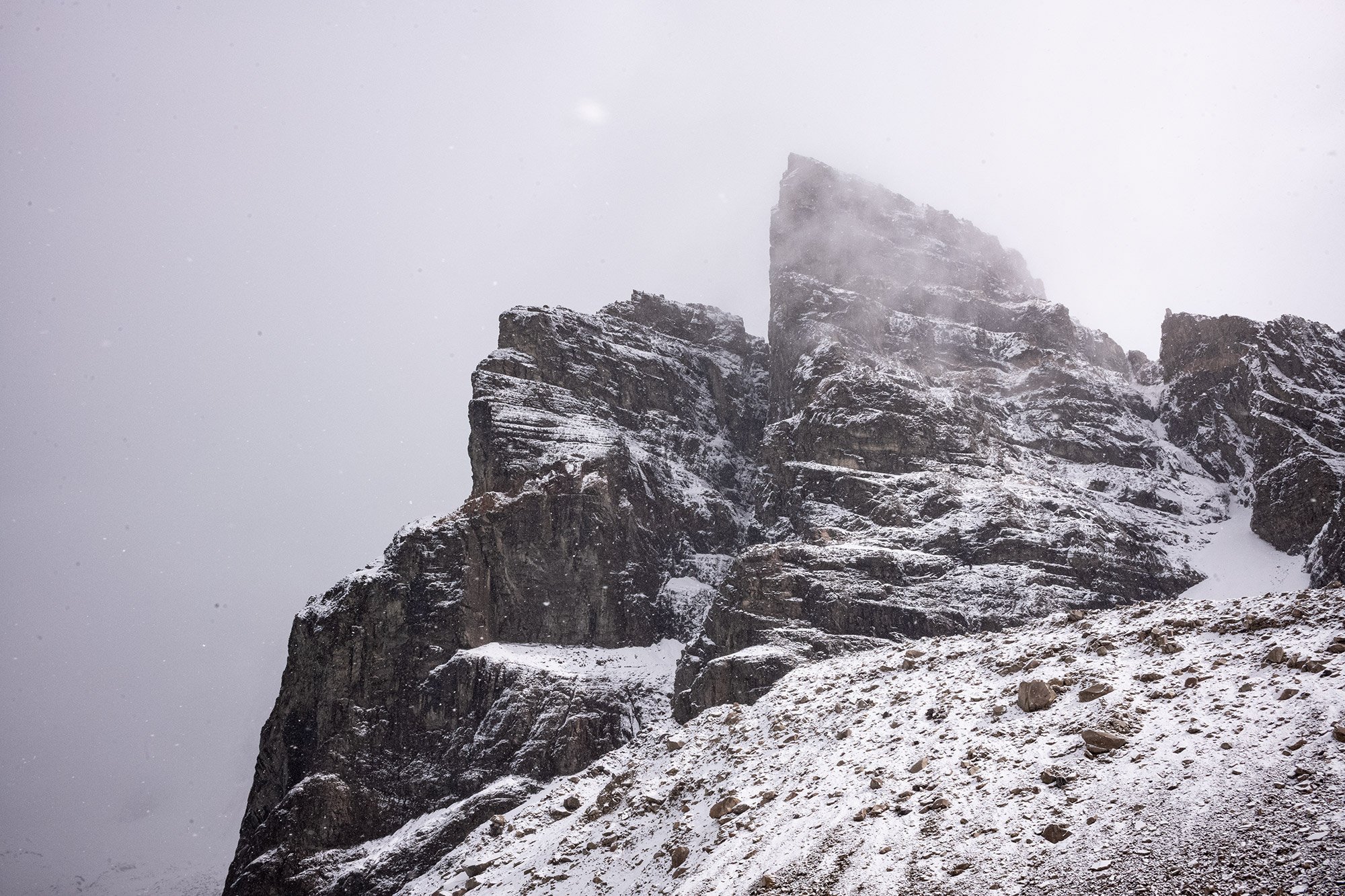
Towards the end we finally reach the exposed moraine that marks the last push to the base of the towers. The path rises dramatically over rocky terrain, and we are sometimes forced to scramble over small boulders on our ascent.
Once we’ve reached the top of the ascent, the path continues along the moraine. Snow has accumulated on the path, making it slippery. The number of hikers we see increases as people slow to make sure their steps are secure.
Finally, turning a corner, we get our first look at the lagoon that sits at the base of the towers. The towers themselves are nowhere to be seen. The cloud cover is too thick.
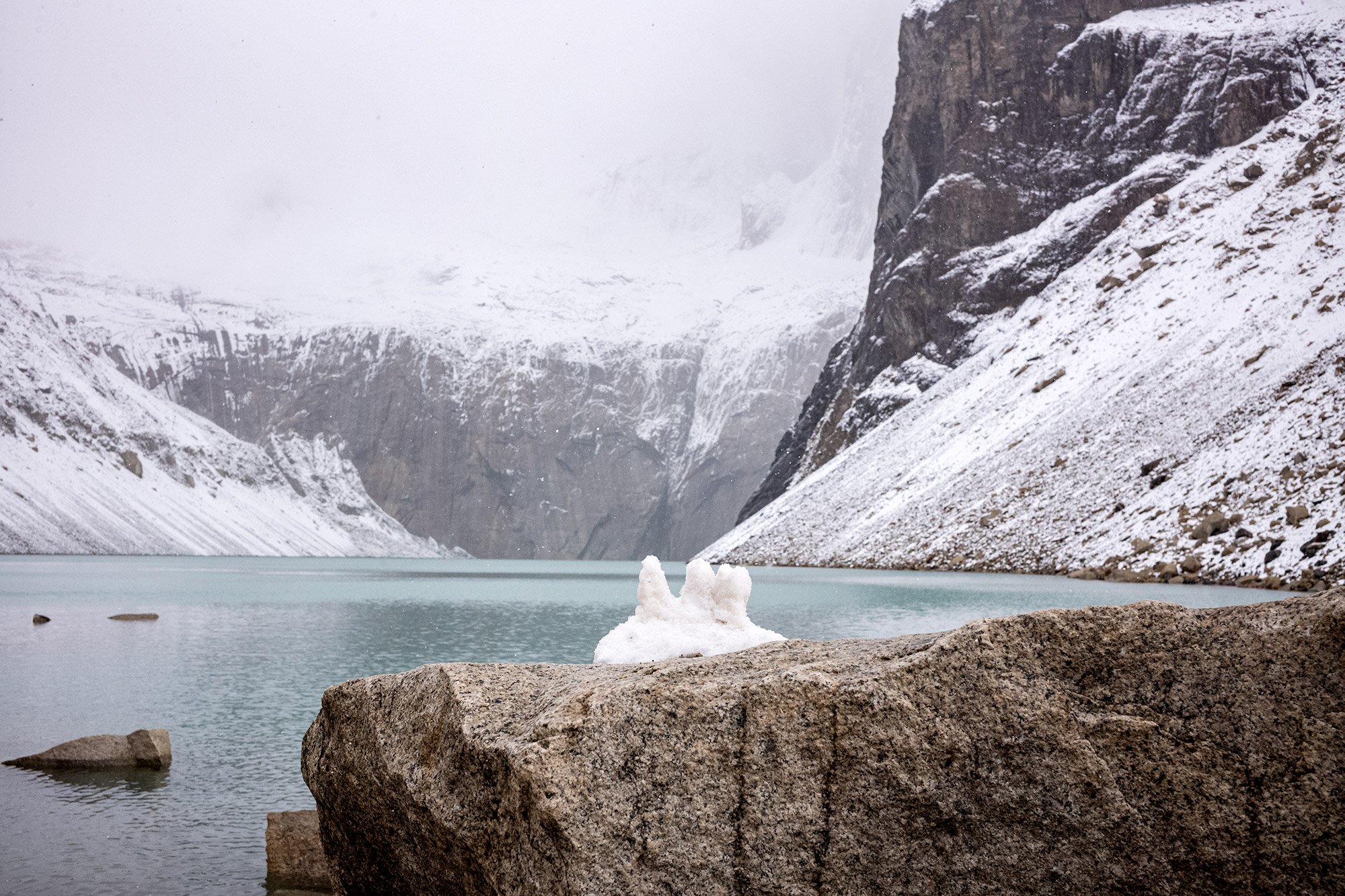
Groups of people shelter in rock outcroppings or sit exposed by the lagoon. My niece and I have outpaced my cousin and we find a spot and unwrap our sandwiches. Snow continues to fall around us and we eat our sandwiches with cold fingers and icy noses.
The clouds shift and tease us with shadows of the towers, never revealing more than the mere sketch of the granite they shroud. Someone has sculpted the towers in snow and left it on a rock. It’s a great approximation and feels special in and of itself. But by the time we leave someone will have knocked it over, either by accident or with an uncertain intent.
We wait and watch the clouds shift, agreeing to a time we will leave. We don’t want to get caught in too much traffic going down, and we want to avoid the winds that pick up during the afternoon. Our first time comes and goes and we decide to spend another ten minutes in the hopes that the skies may clear.
A couple near us tells us that a guide had told them that the chances of the clouds clearing before people will be ushered by park rangers from the area is unlikely. Armed with that information, we turn our backs and begin our descent.
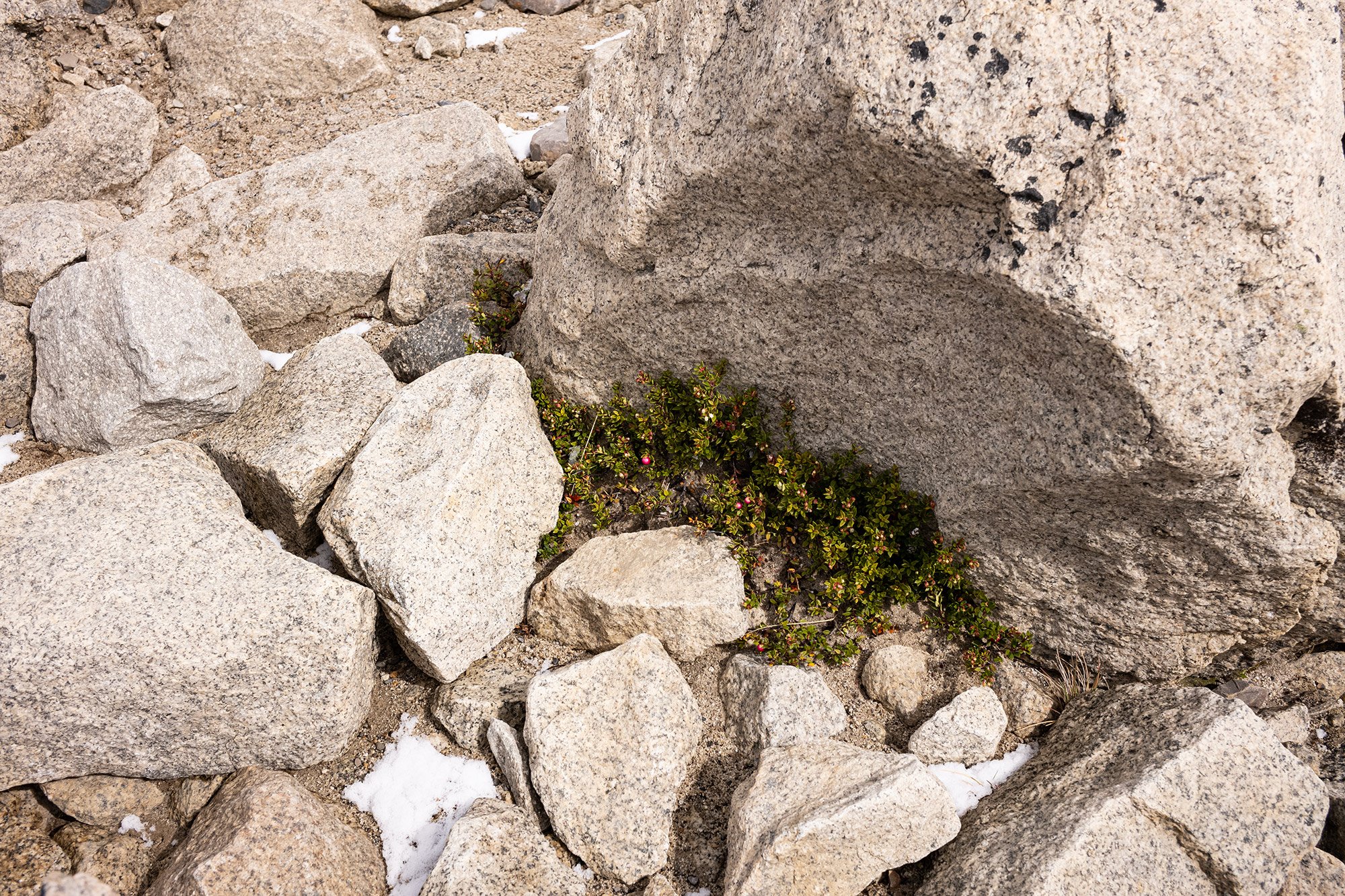
Just off the top, we see a couple picking berries off of a bush. It’s calafate, the legendary berry that grows only in this region, and we happily find a nearby bush to sample the berries fresh off the vine. Patagonian folklore has it that if you eat one of the berries, you’ll be compelled to return.
Legend has it that the bush is the transformed body of a young girl who fell in love with a boy from another tribe. A shaman performed the ritual at the behest of her father, the Chief of her tribe, to prevent her from eloping. Her lover died due to heartbreak and grief.
In the summer, the bush sports golden floewrs, which are said to be the eyes of the young girl. The shaman, overcome by the damage he caused, transformed the flowers into berries, which are said to make up the heart of the young girl, Calafate.
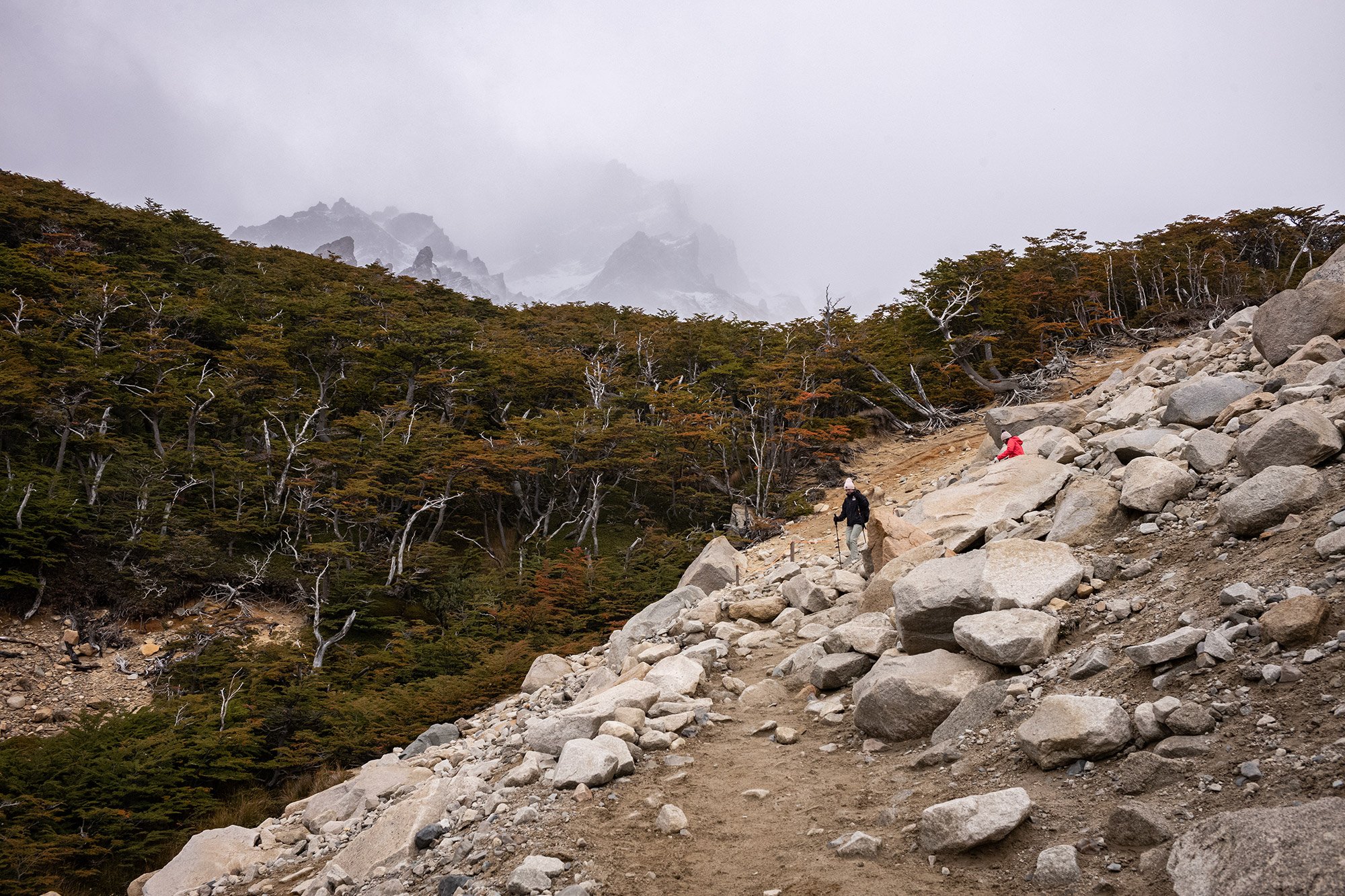
The winds had picked up on our descent of the moraine, but once we were back in the trees we were sheltered. As we continue hiking the skies clear. The landscape we had just traversed opens up. It’s almost like we’re on a completely different hike.
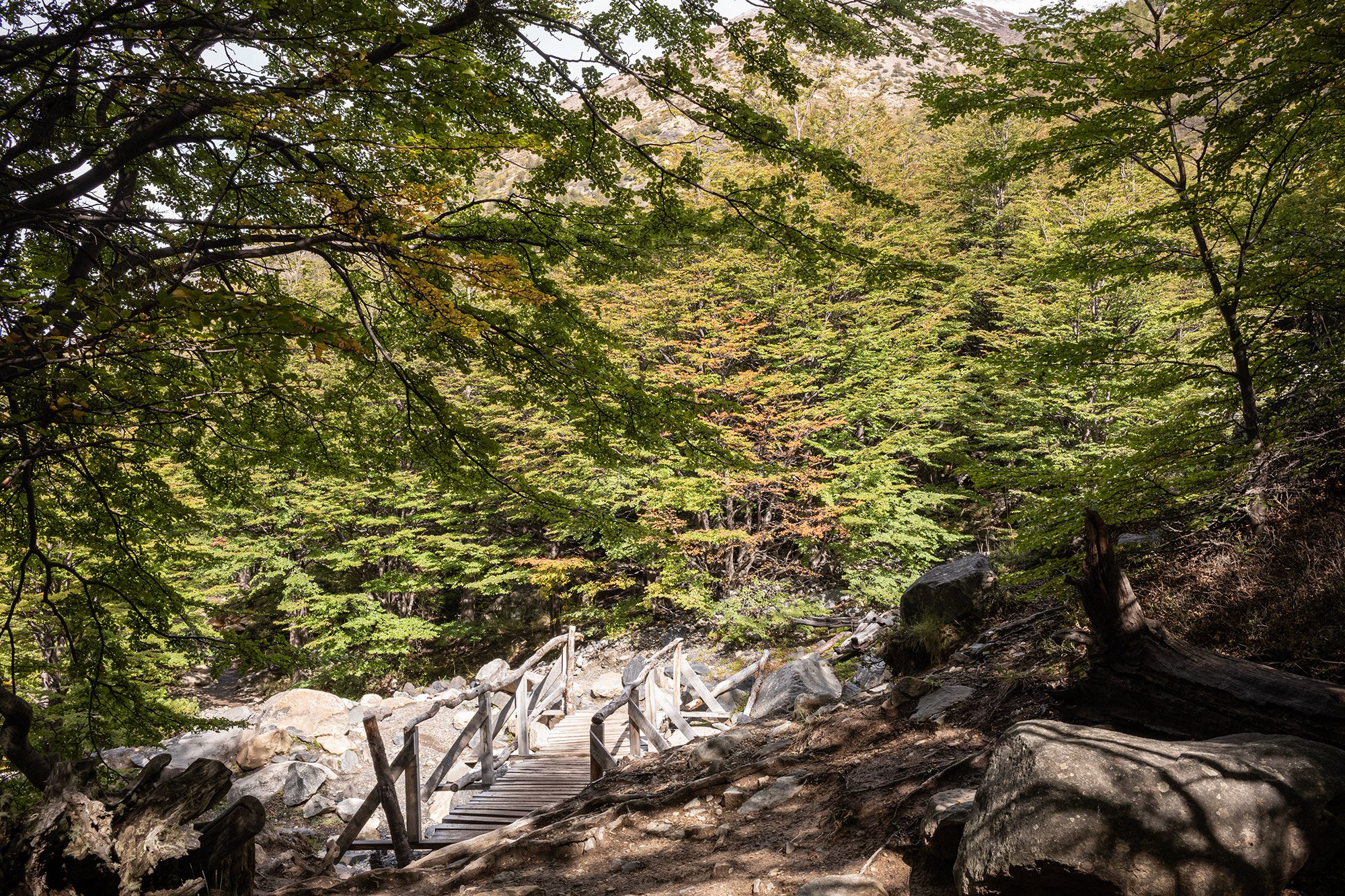
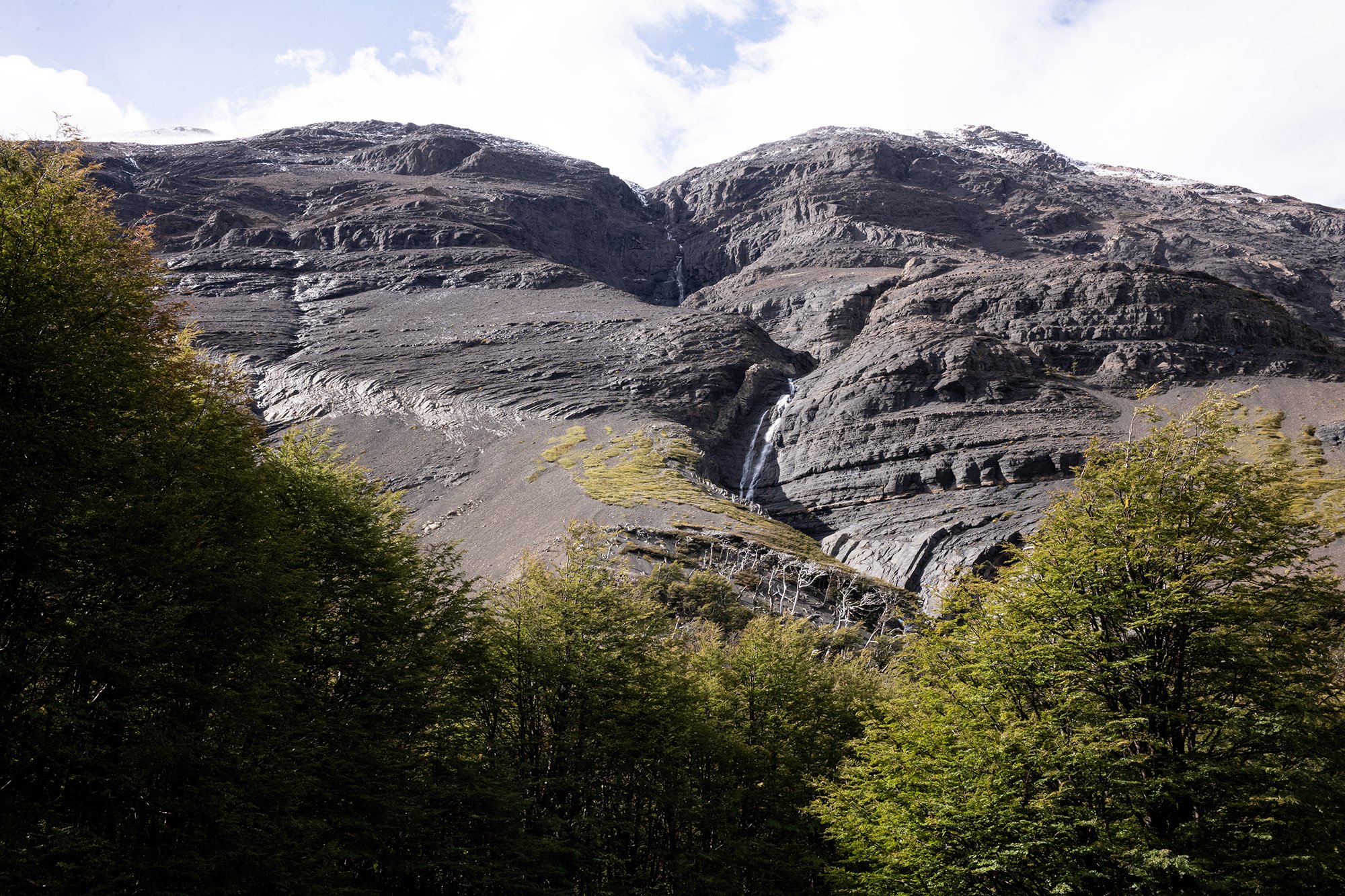
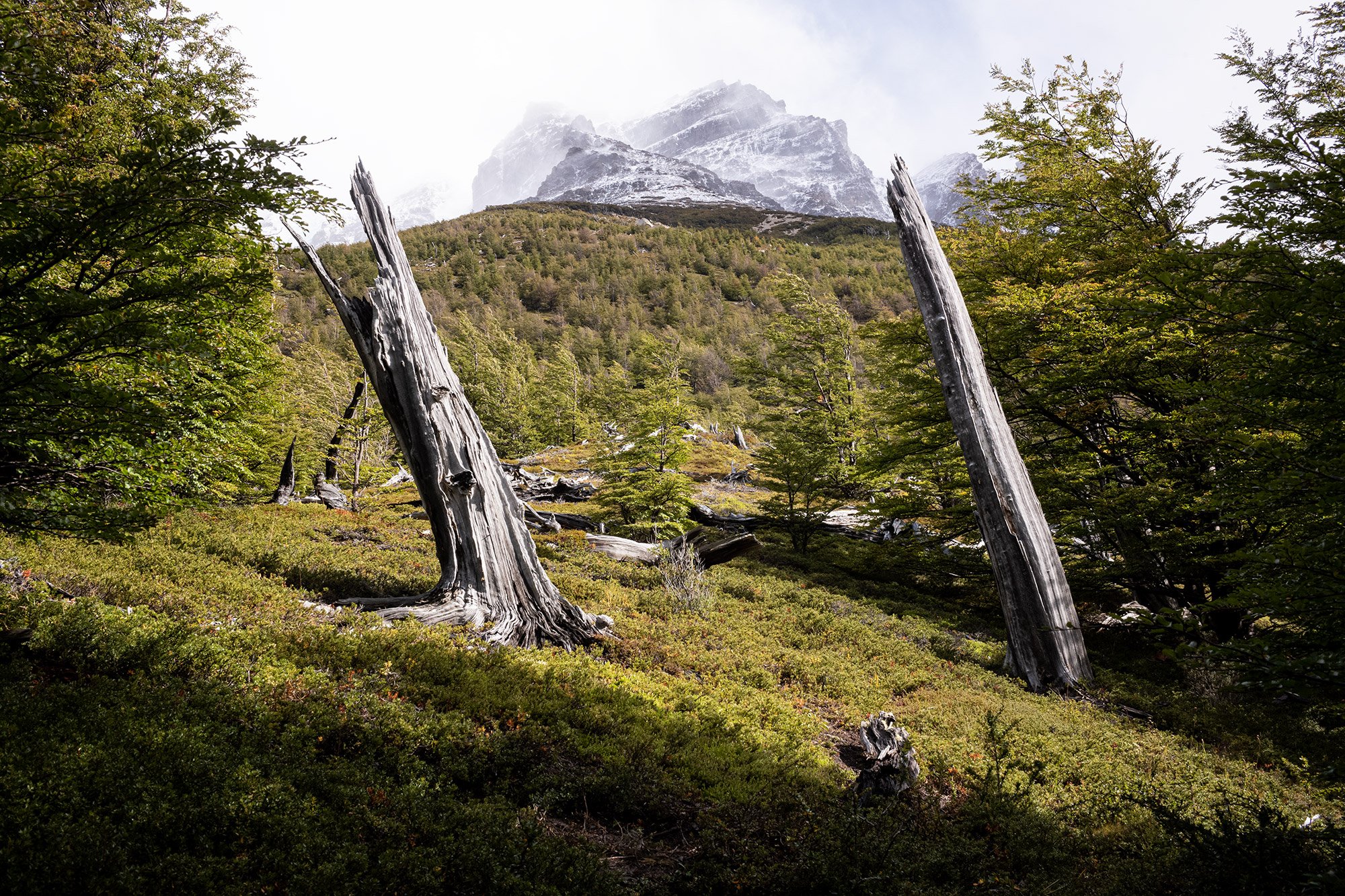
Crossing a bridge near the refugio an older couple are stopped on the other side. They’re looking back and point out the towers, visible through thinning clouds. He looks sad, wistful that he missed the sight at the top, but I’m happy to have seen them at all.
The liklihood of seeing the towers at the top is never guaranteed; were I more motivated I’d consider camping at the refugio and trying to catch them at sunrise. If ever I consider doing the hike again, I may look into that option.
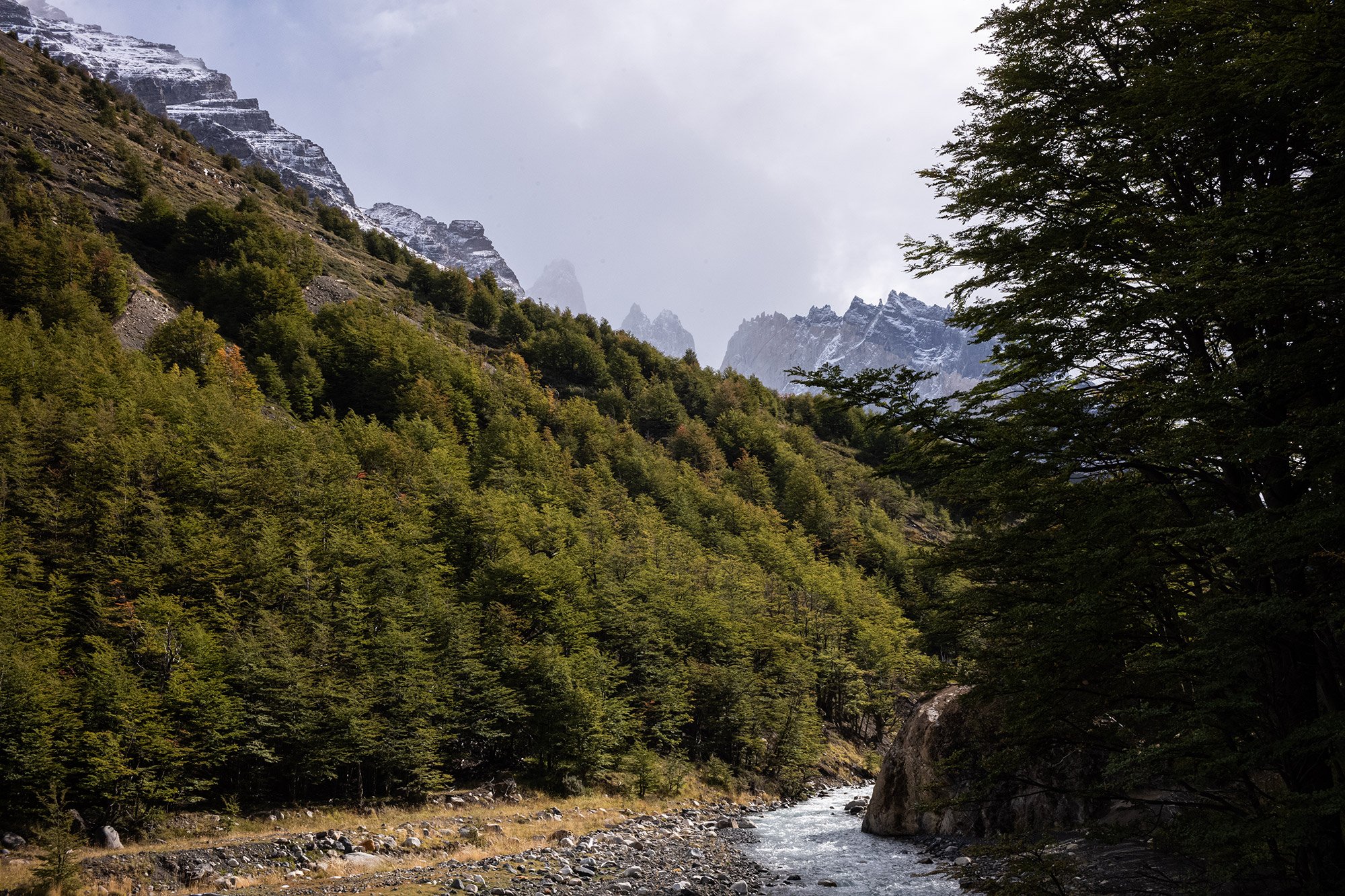
Our legs are tired. My knees are killing me; my niece’s feet hurt. At the refugio we find a picnic table and decide to take a break and eat the brownies that have been packed with our lunchboxes. My cousin buys Orange Fanta for my niece and I. They’re 5$US each and worth every penny.
When I was backpacking in Southeast Asia—my first extended trip—my treat after a particularly long or grueling day walking around in the heat and humidity was a Fanta. Drinking one with my niece feels like a sort of tradition being carried on.
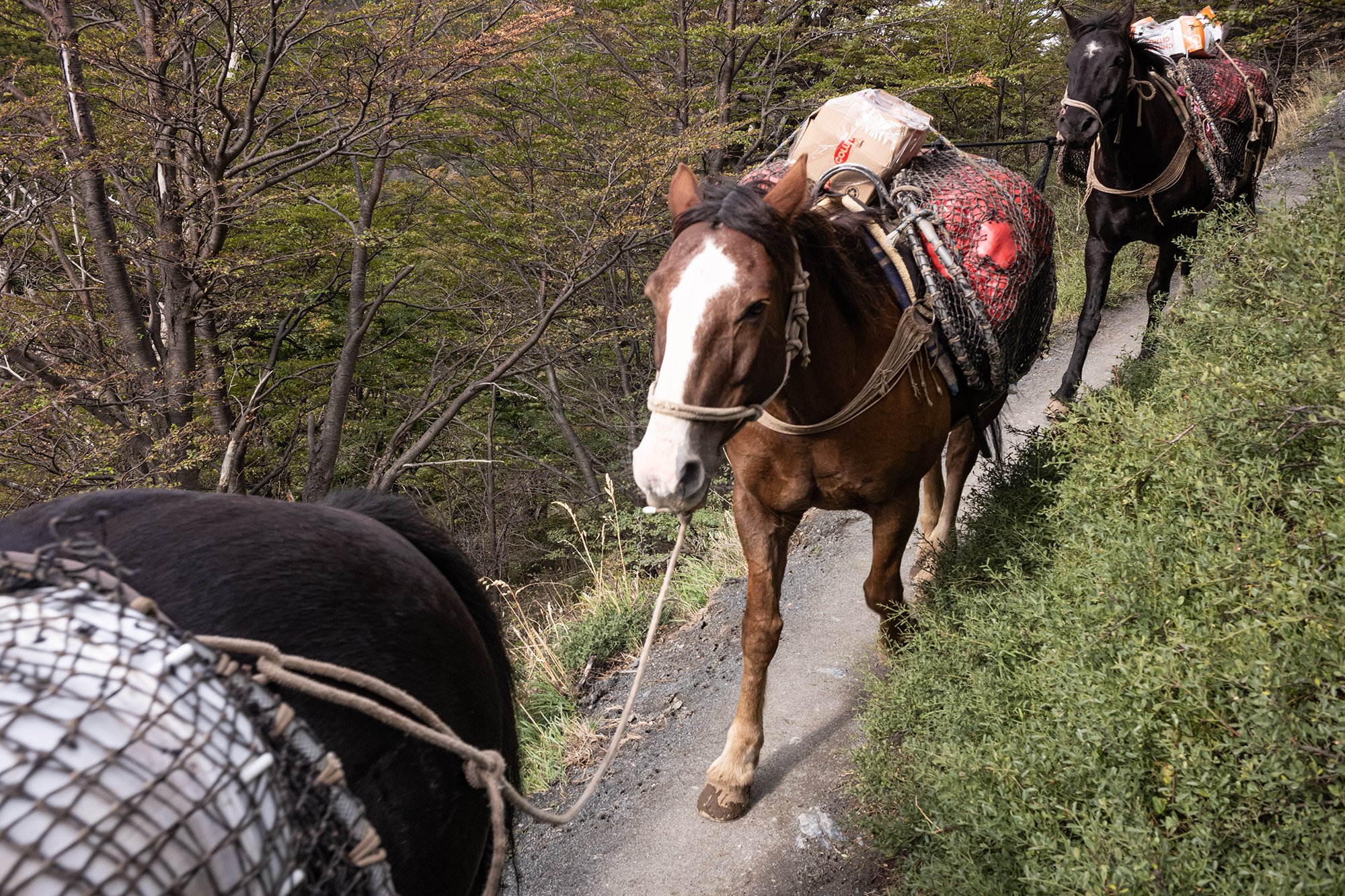
By the time we leave the refugio, the wind has really started picking up and we are eager to finish our hike. We cross the river and start once again ascending the valley. My niece calls out ahead and I look up to see a train of horses laden with supplies. We step out of the path to let them pass. There go our 5$ Fantas, I point out.

We continue on. At the top of the pass out of the valley we can feel the wind again, and the sign alerting us of possible high gusts no longer seems like a hollow warning.
Descending down the path to the trailhead is a lot harder than it was ascending, even though it’s not that steep a grade. I’ve been taking Advil and I wait for it to take hold for this last push.
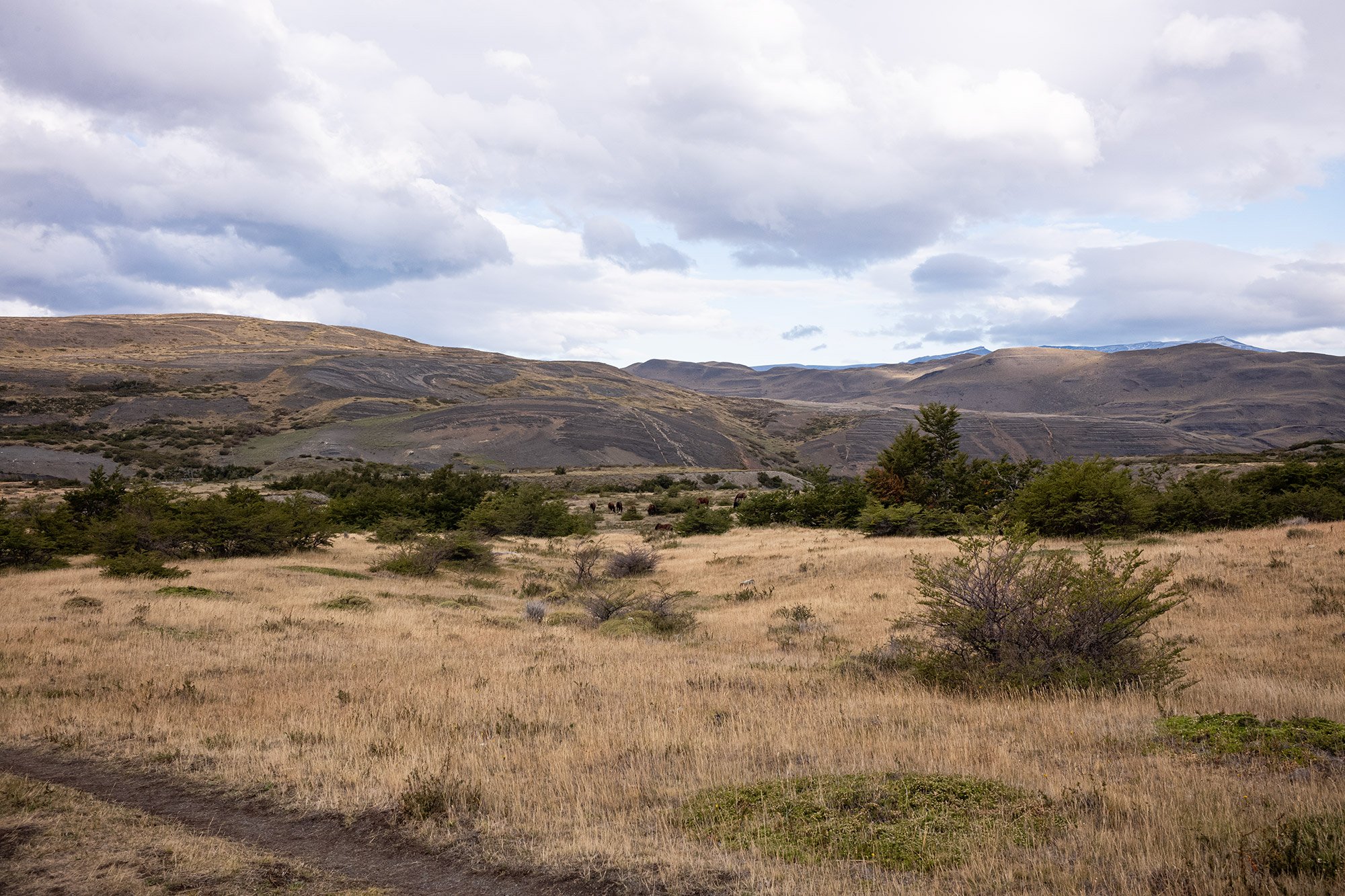
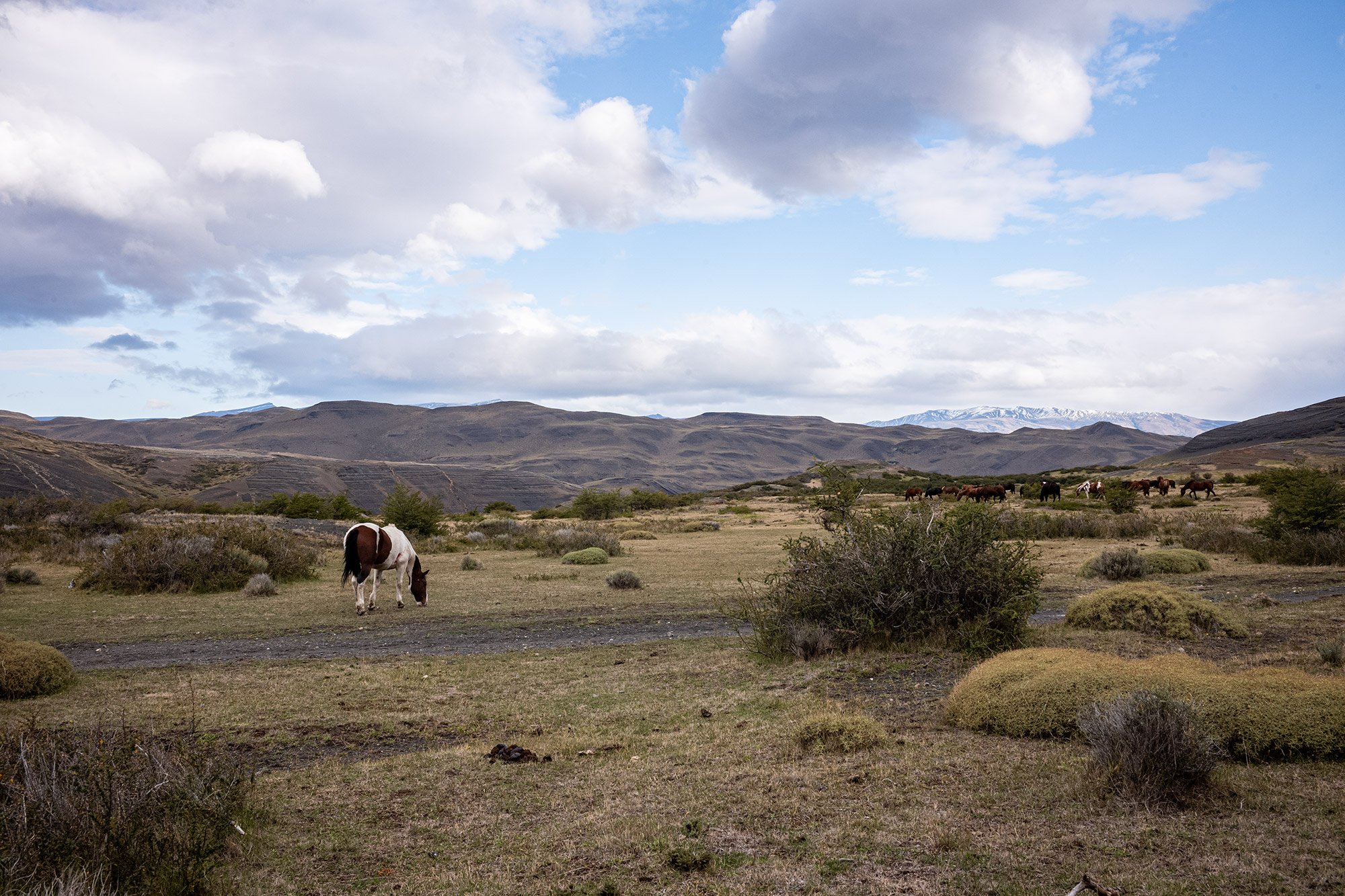
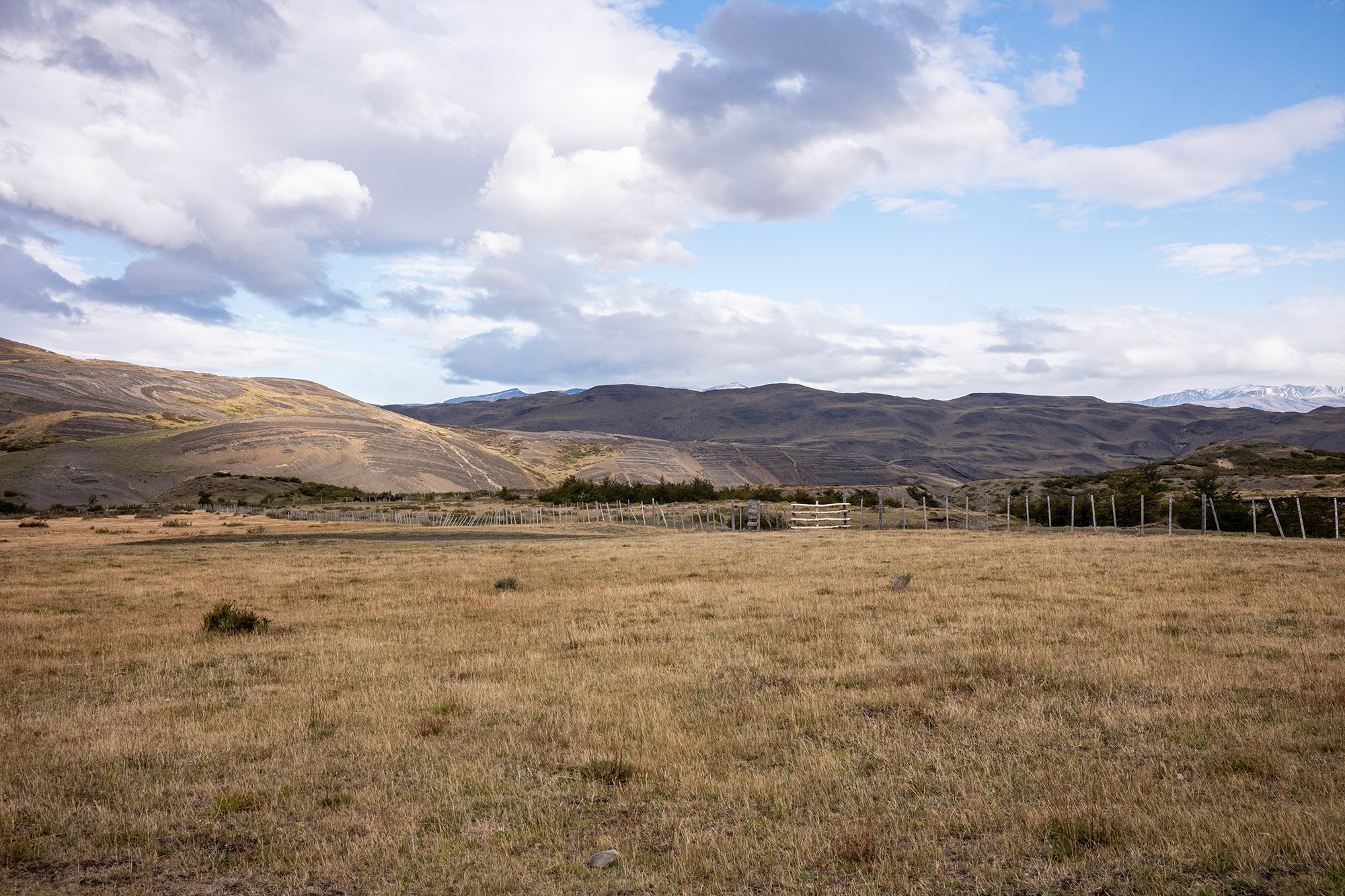
At the trailhead a large group of trekkers is taking their photo in front of the sign. From there it’s almost another two kilometers back to the parking lot. A refugio sits right by the trailhead and I wish there were minibuses available to shuttle people back and forth. It feels like cruel and unusual punishment to have to hike another span of kilometers after having just completed our 18 kilometer hike.
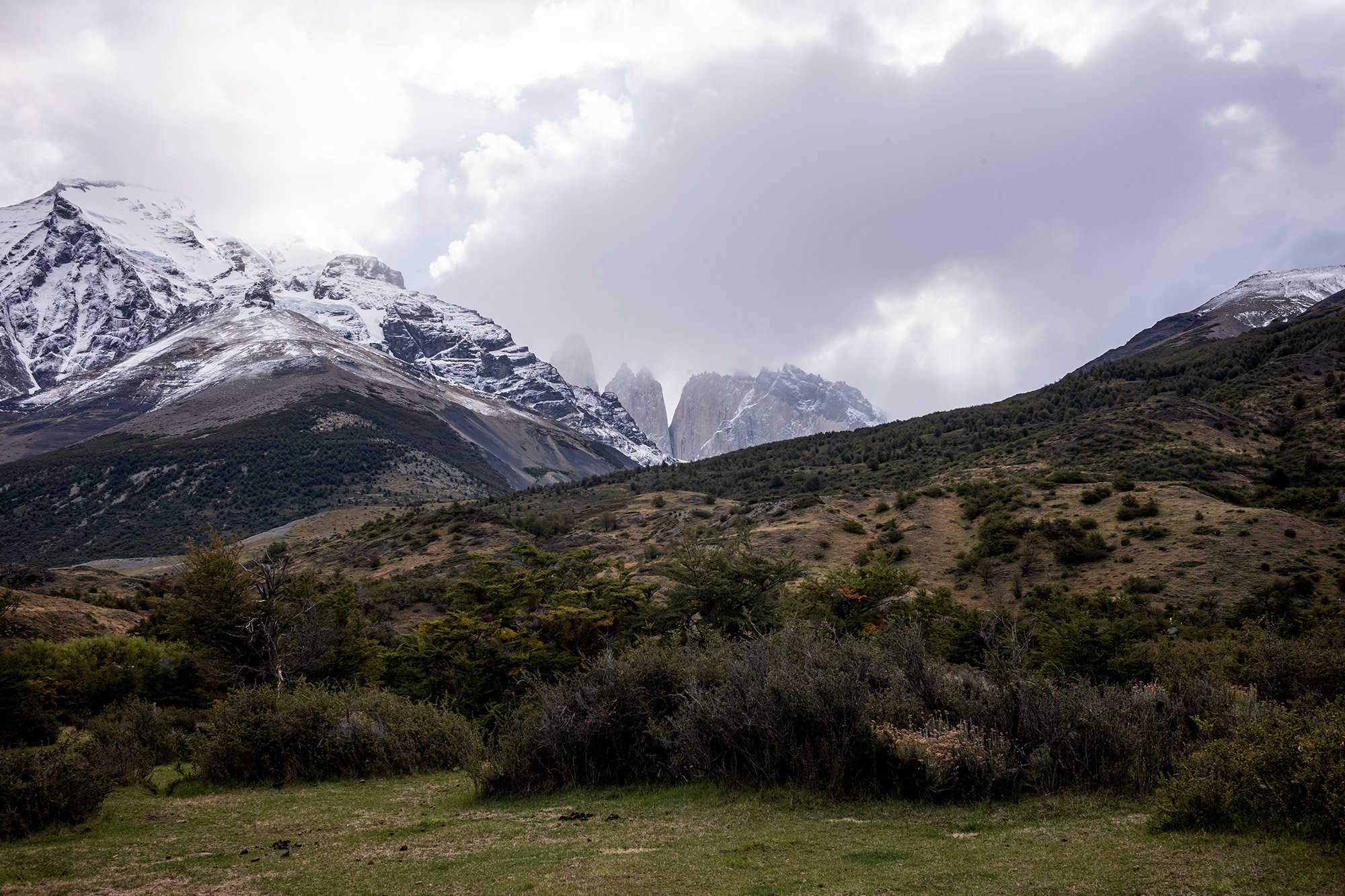
Near the parking lot we catch another sight of the towers. I stop to take a photo before turning once again away from them and don’t look back until we get back to the Jeep. I take off my boots and slip into flip flops and thank Rodrigo again for his advice.
We collapse our poles and store our backpacks and drive back to the hotel.
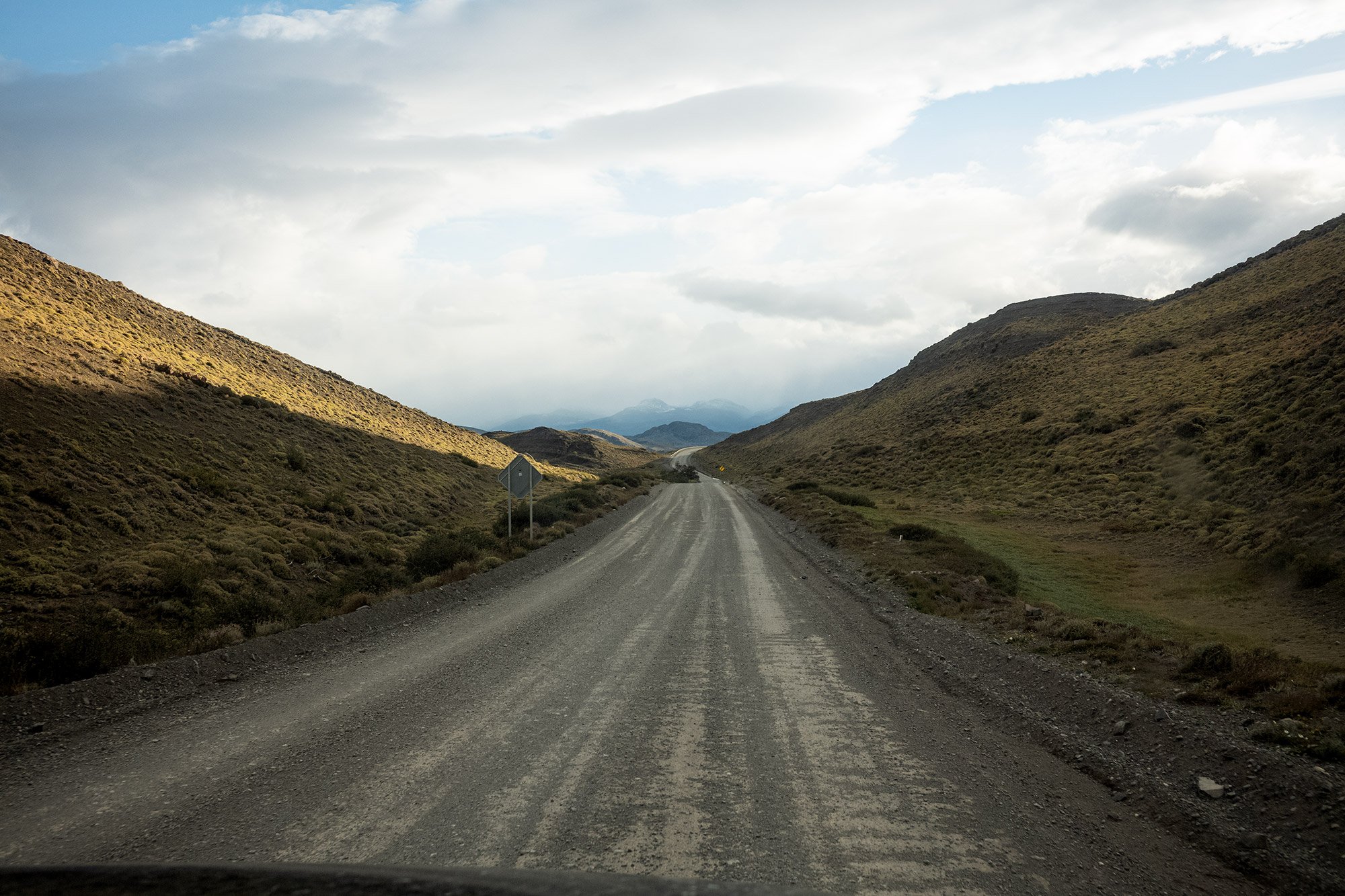
Along the way the skies and sun light the mountains in dramatic ways. I ask my cousin to stop at one point and stumble out of the Jeep to take a photo. My niece grumbles, she wants to get back to the hotel so we can go to the pool. Truthfully, so do I, but I can’t resist the light. Is it worth it? she asks. Later, when I show her the photo she agrees that it was.
At the hotel my niece and I change and head immediately for the pool. We use the water massage and then let ourselves float freely in the water. It feels great to feel suspended and to have the pressure taken off of my knees and legs.
Rodrigo has texted us to tell us that our kayaking trip for the following day has been canceled on account of weather. We’re bummed but also a little excited about spending a day relaxing at the hotel. My cousin asks for low-impact options and he suggests a short hike at Lago Grey, where we can see the glacier from a distance. She joins us at the pool. Before dinner we stop at the spa to make reservations for facials and massages.
16 March 2023
⛰️
